Carnival (Carnivál) in the Dominican Republic is one of the biggest events of the year in Santo Domingo. And we just happened to find ourselves here for the final day of festivities. Here’s what to know before your own Dominican Carnival experience.
Carnival is extremely competitive in the DR and there are prizes given out to the best of the best. Many people spend the entire year creating their costume and some spend thousands of dollars.
Each city across the country holds its own parade. The one in La Vega is considered the oldest Carnival celebration in the Americas, and the best.
However, the capital Santo Domingo hosts the grand finale parade, the largest carnival celebration in the Dominican Republic, which is what we have the good fortune of seeing today!
Finding Carnival
Setting out from the old hospital ruins on the edge of Santo Domingo’s Zona Colonial, we didn’t exactly know where we were going at first. We figured we’d either find a taxi along the way or eventually make our way down to the parade. We wanted to walk there, but every Dominican we asked seemed to think we were crazy to want to walk so far.
Lori and I began to plot our own route, but before we could pull out our map, we noticed a group of people in bright costumes passing us on the street. Then another, and another. So, naturally, we followed them.
A block later the number of revelers had multiplied substantially, most of them children, until the street was packed and we found ourselves in a stream of people flowing in one definitive direction.
A short while later, the stream thinned and joined a larger crowd moving in a new direction, westward along the Malecón.
We had found Carnival!
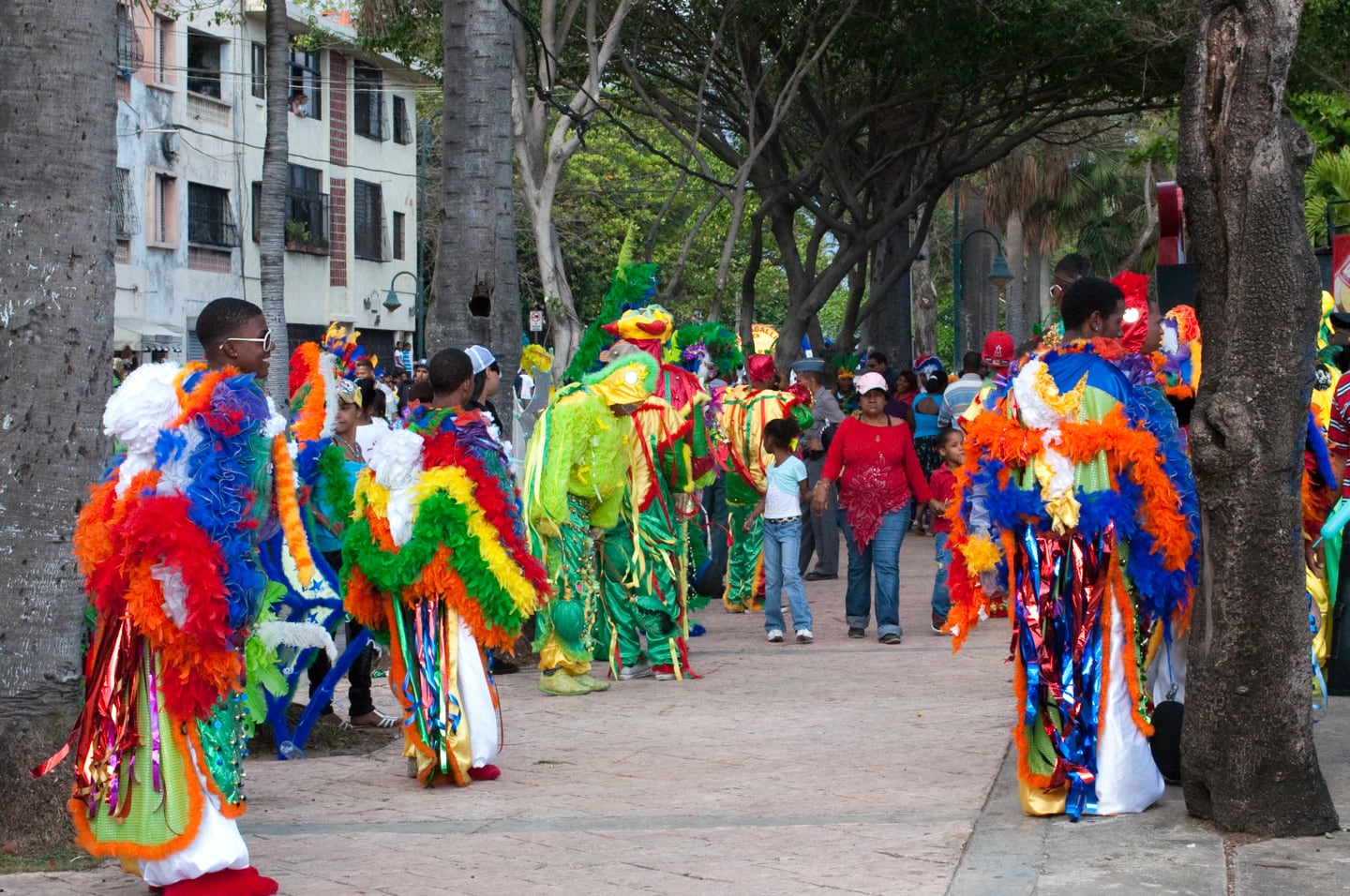
I think it’s also worth mentioning that all day we suffered the usual mild molestation one would expect to encounter in the tourist sections of most cities throughout the world.
That is until we set off to find the parade.
Some locals had warned us that we should be extra cautious as there would likely be few foreigners. In my experience, however, I have found that those are often the safest places for foreigners, as locals don’t usually come to local events with an agenda to swindle/threaten/rob/extort/kidnap foreigners. They just come to enjoy the festivities and couldn’t care less that we’re there.
And that’s how I prefer it.
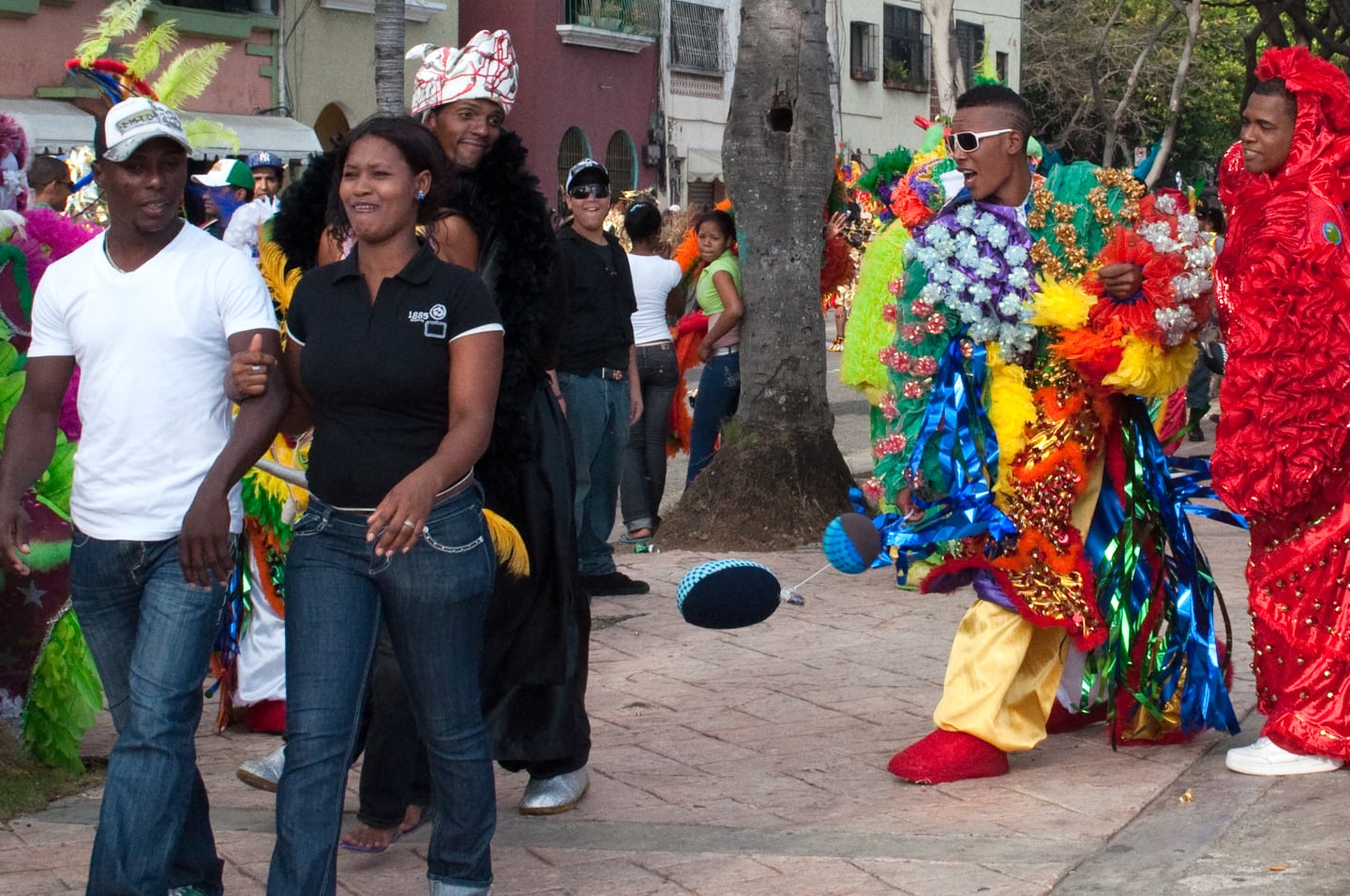
What we did have to watch out for were the men swinging the rubber balls attached to ropes.
Actually, Lori only had to worry about that, as the wrath of the vejiga is only directed toward women.
Apparently, vejigas, along with látigos (whips), were an early form of crowd control, clearing the way for revelers in costume. These days, however, a wrap on the butt is said to bring good luck.
The vejigas were traditionally made with cow or pig bladders and filled with air, but are now mostly made of rubber.
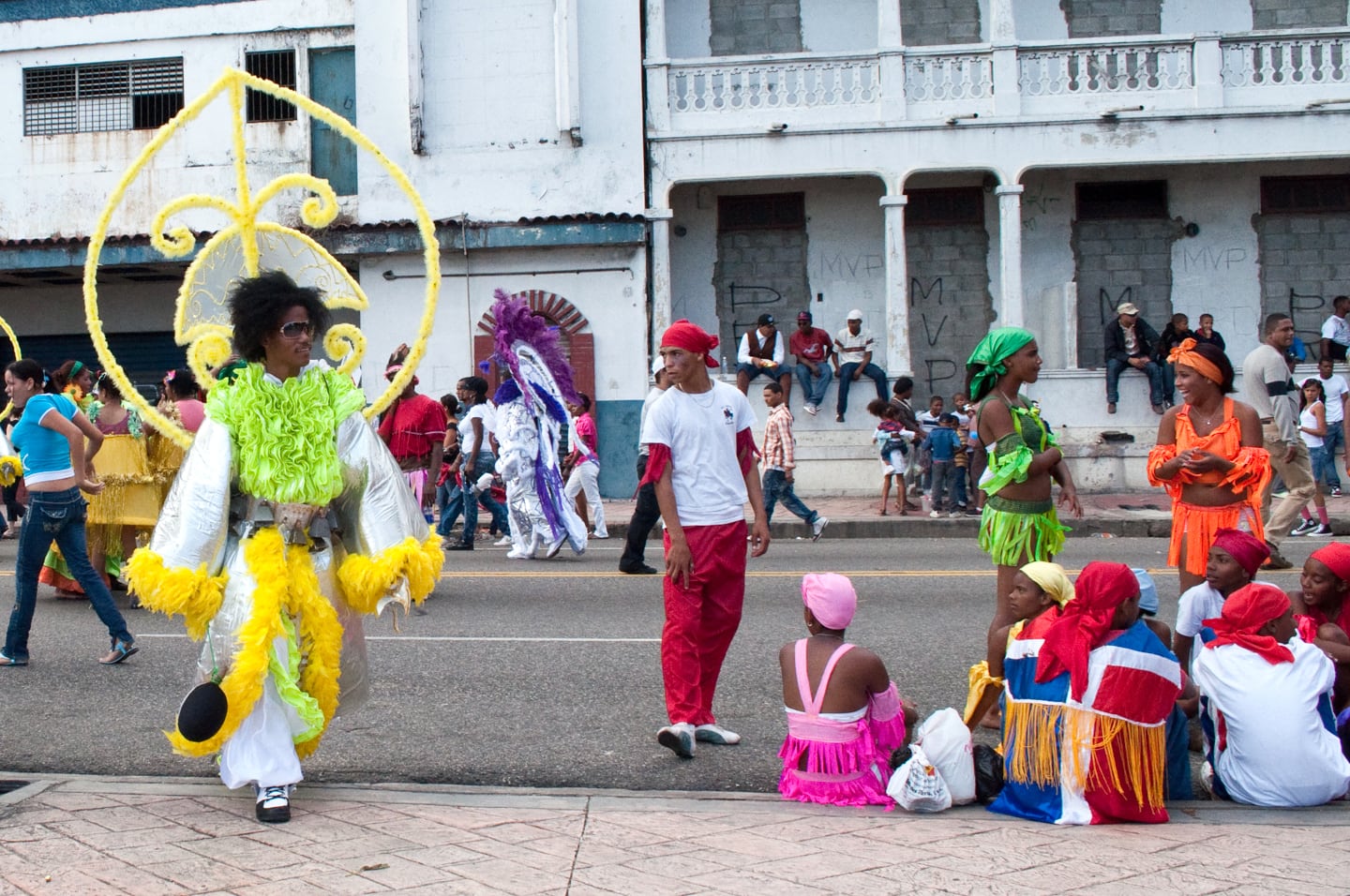
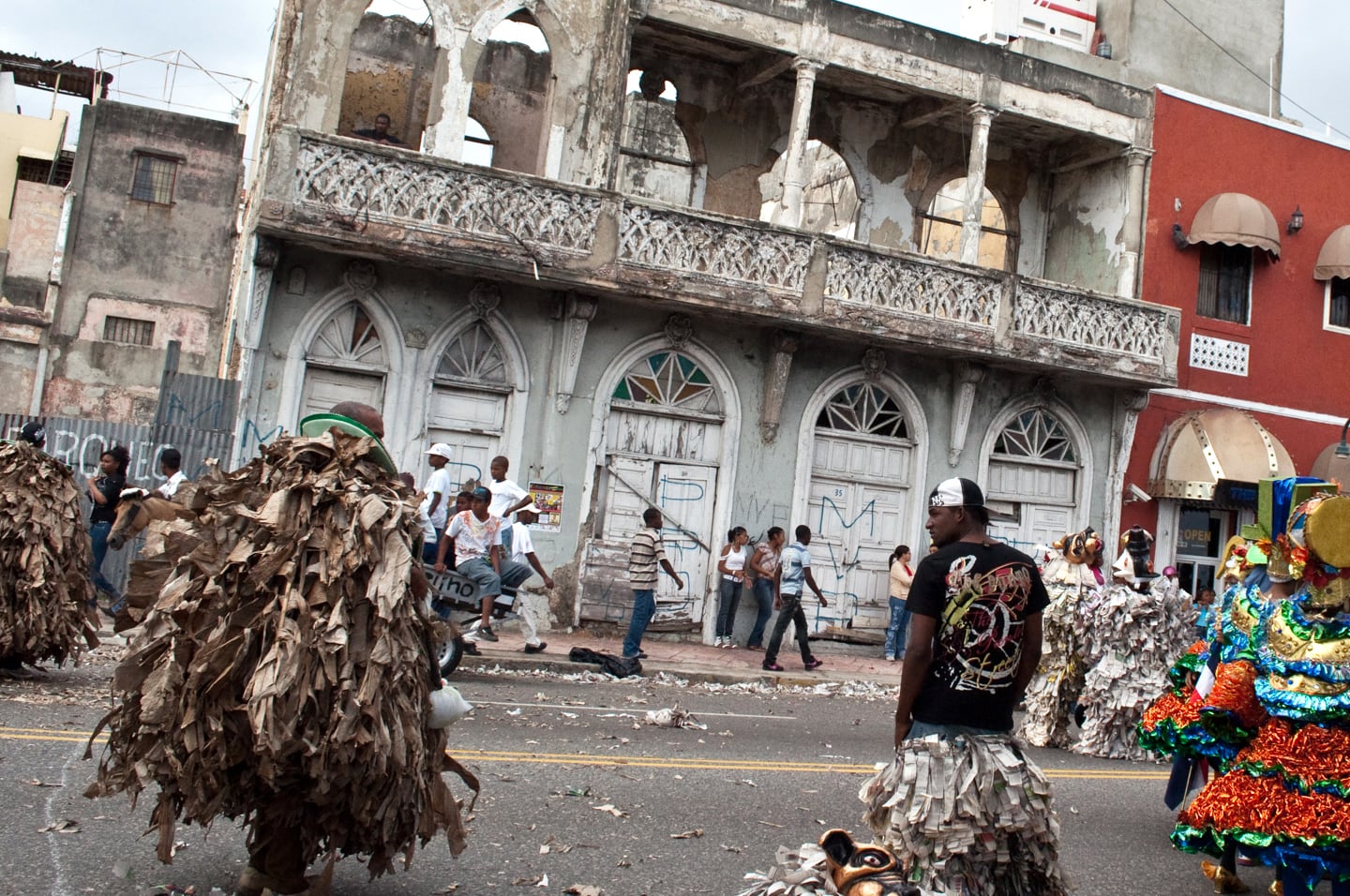
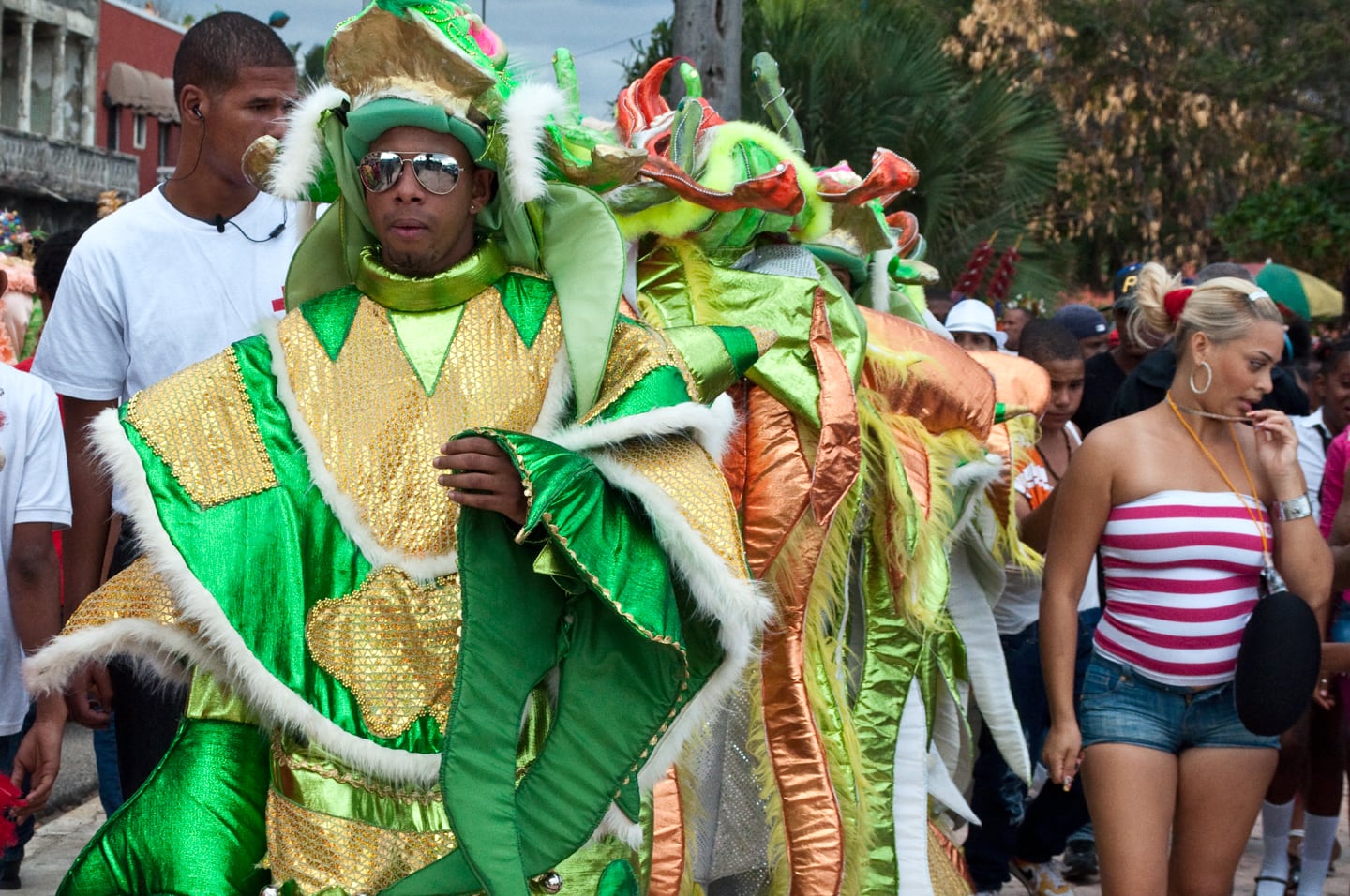
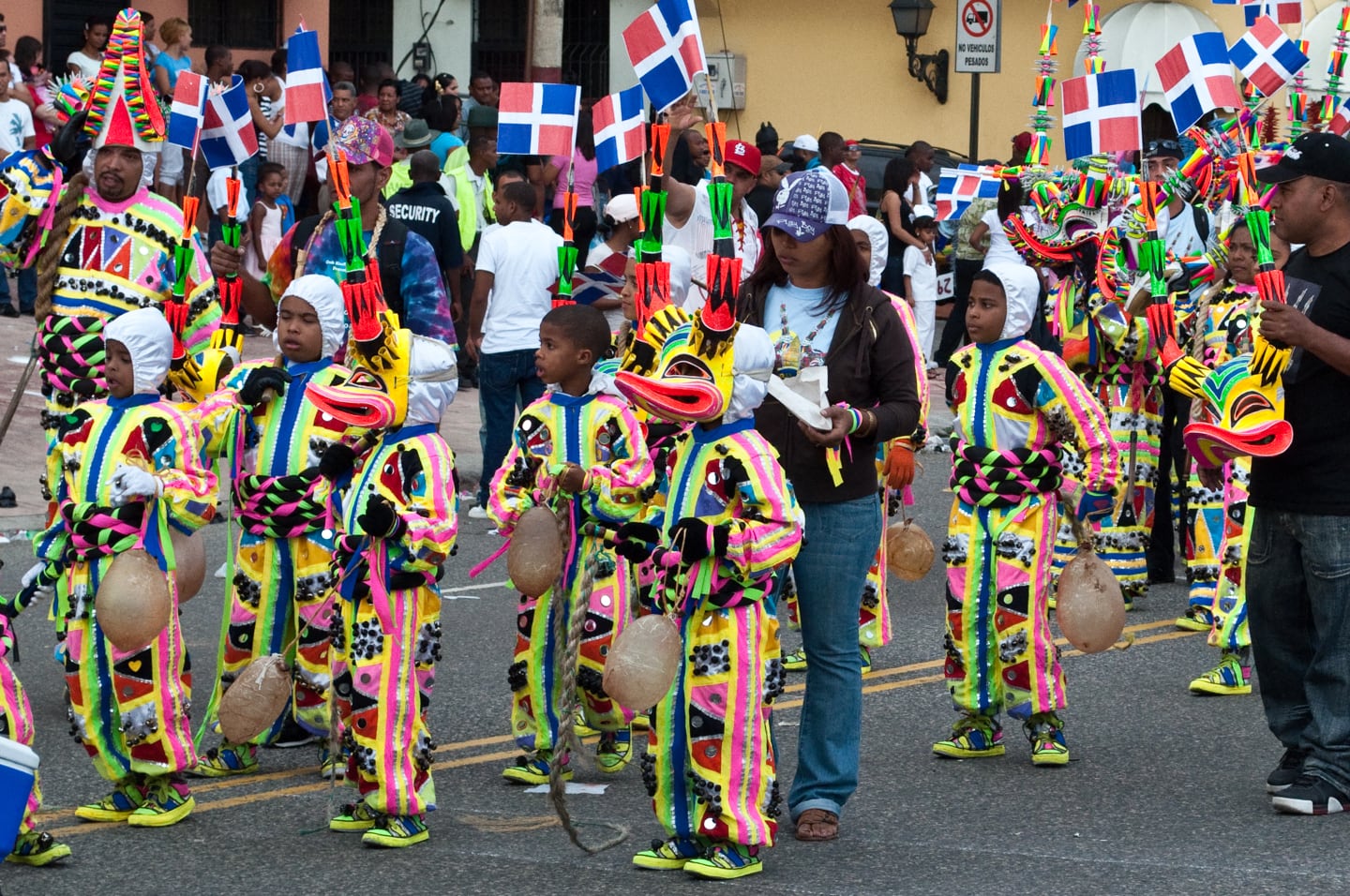
It was an unbelievably vibrant parade, certainly the most colorful event I’ve ever seen.
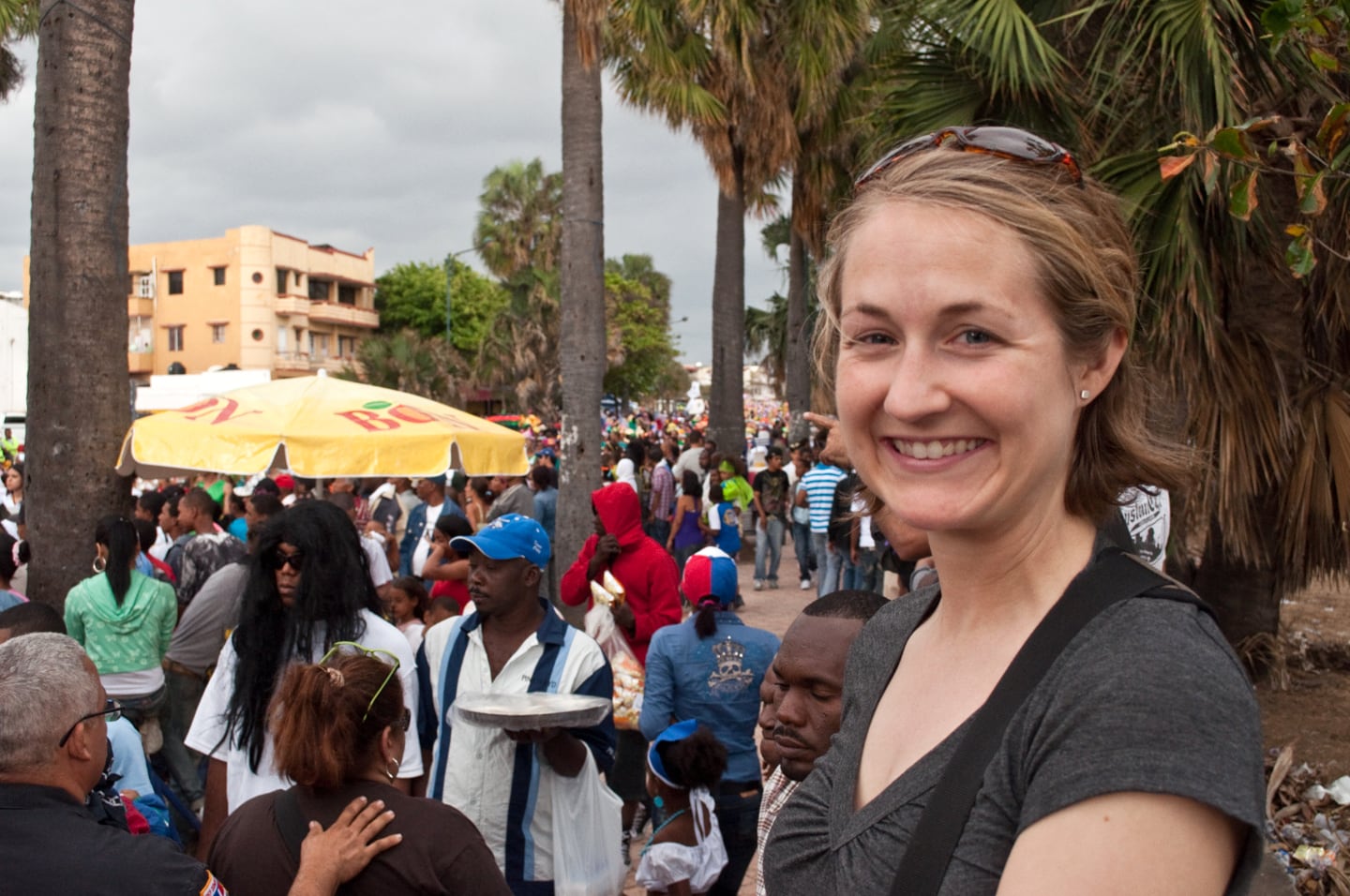
What Is Unique About Dominican Republic Carnival?
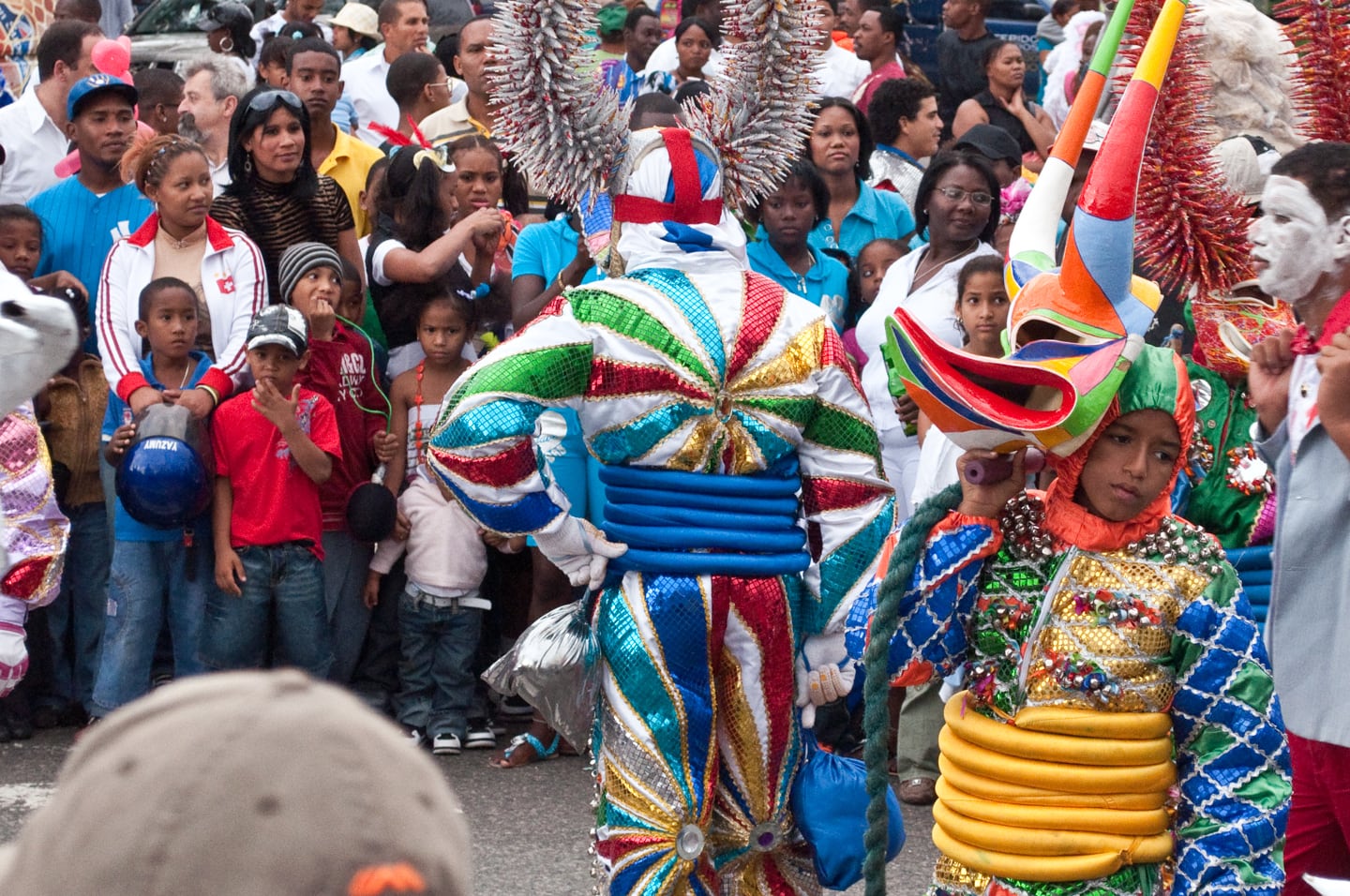
Every corner of the globe that observes Carnival does it just a little differently. And Santo Domingo is no exception.
Masks play a central roll in Carnival here. Revelers don striking, often frightening, masks that symbolize figures in the spirit world. Some people believe that the masks can help you gain favor (or hide from) powerful spirits.
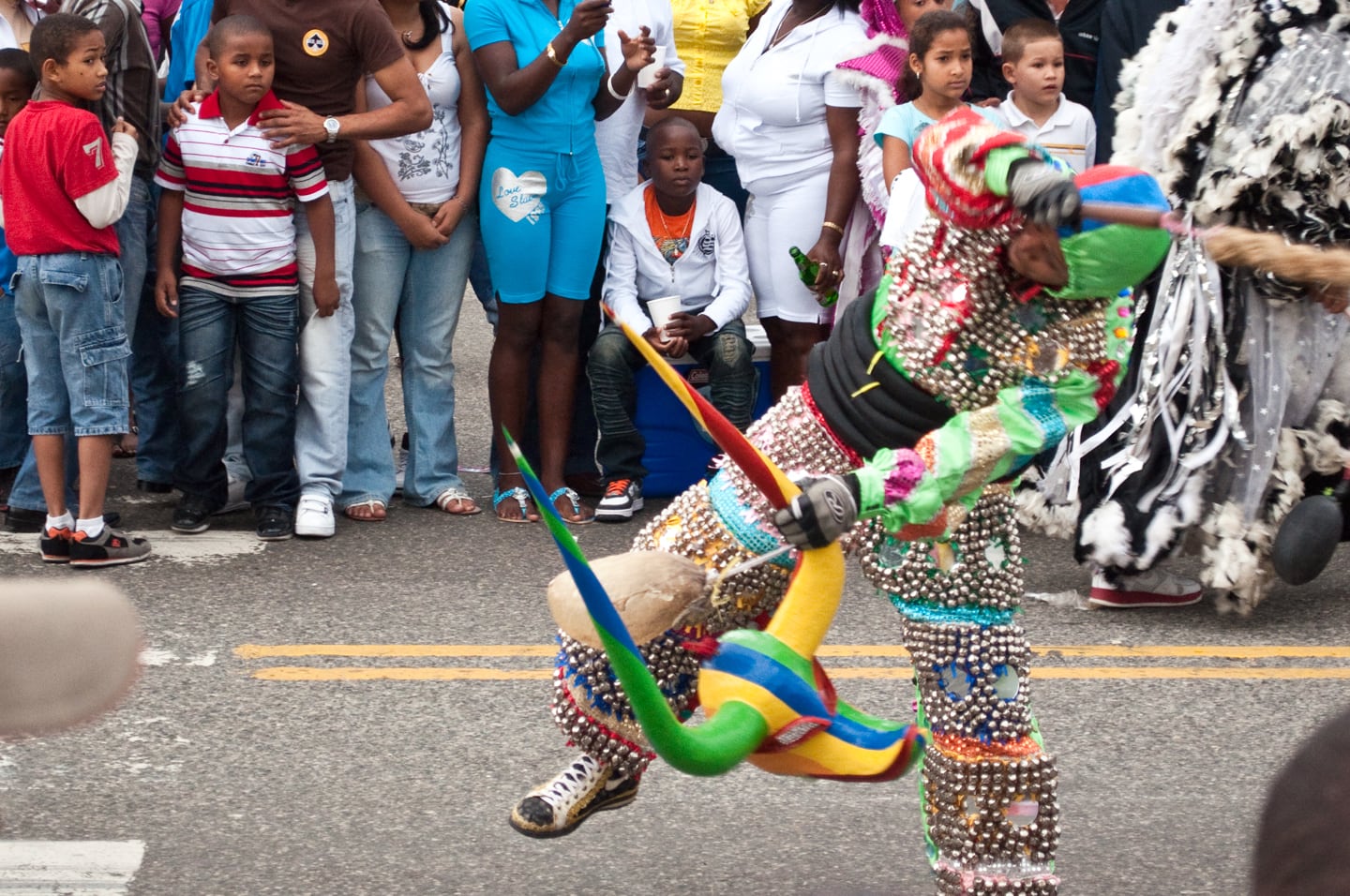
Long before the arrival of the Spanish, the local indigenous Taino people had their own celebrations called areitos. These celebrations usually coincided with the planting and harvest seasons or commemorated events such as weddings, a death, or other milestones.
Similar to what we see today, the Taino would decorate their body with masks, jewelry, and paint.
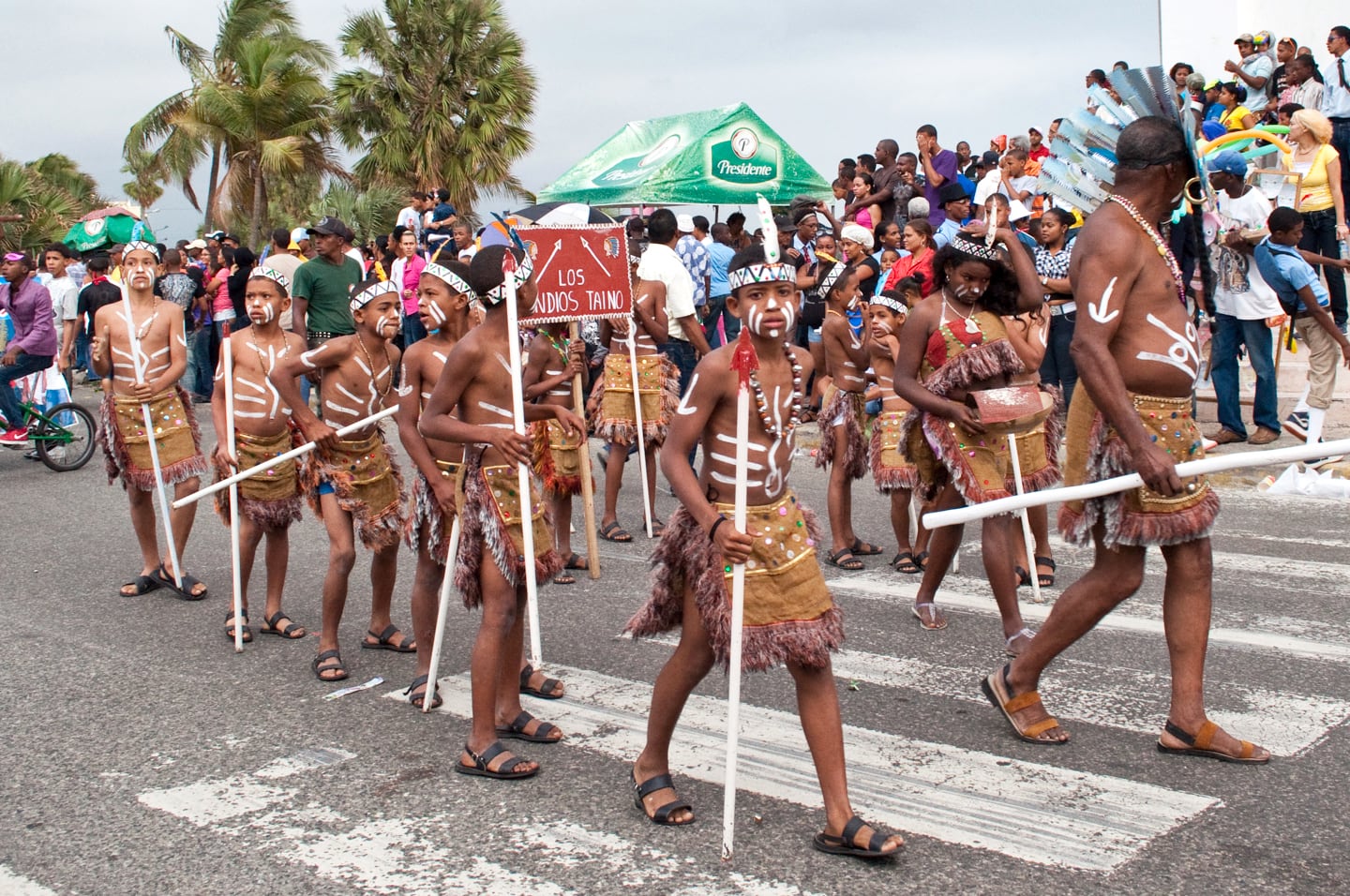
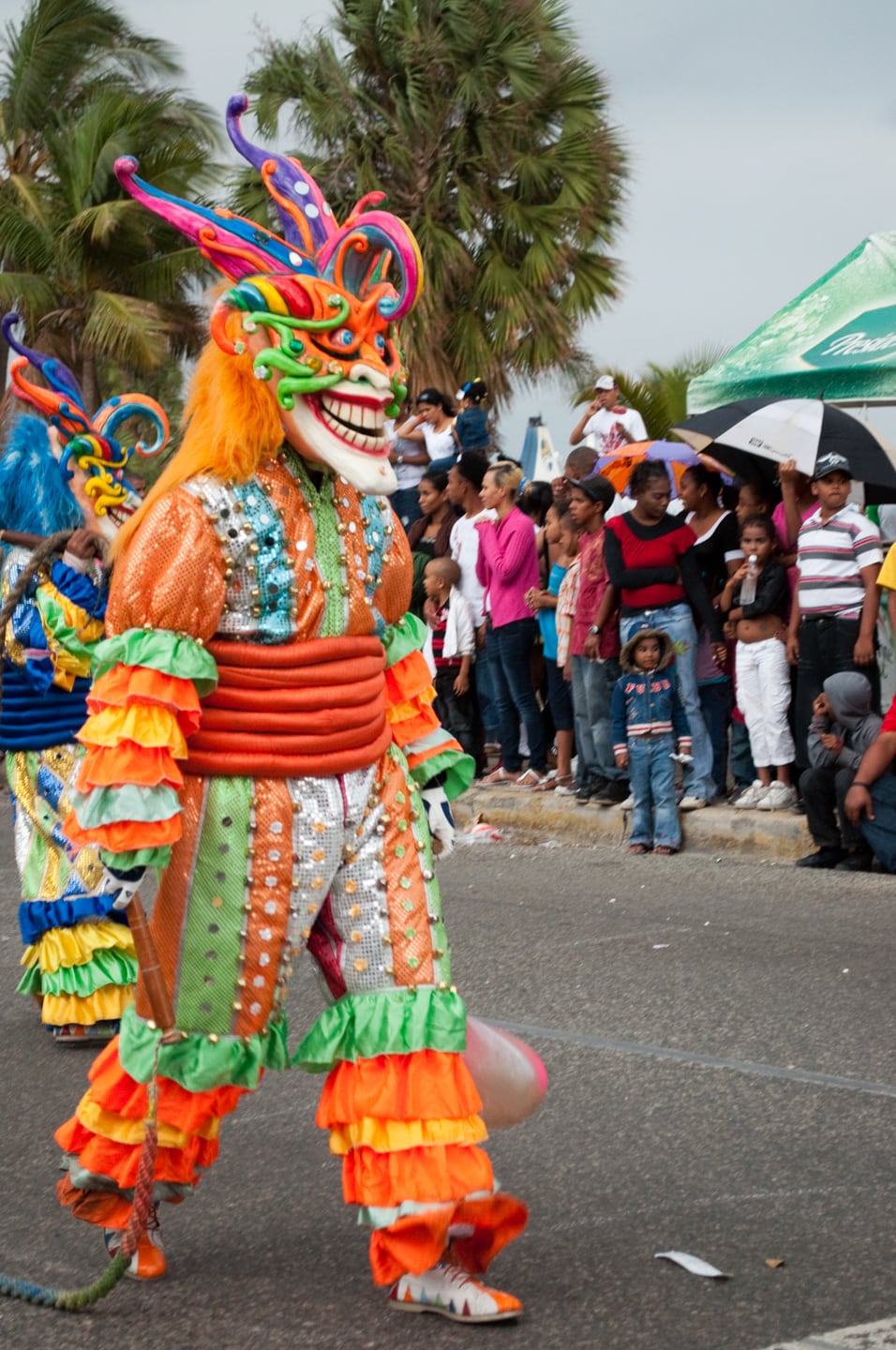
This being Dominican Carnival, celebrations are hardly a serious event. There seems to be a little bit of humor infused in just about everything here, and carnival costumes and traditions are a strong reflection of that.
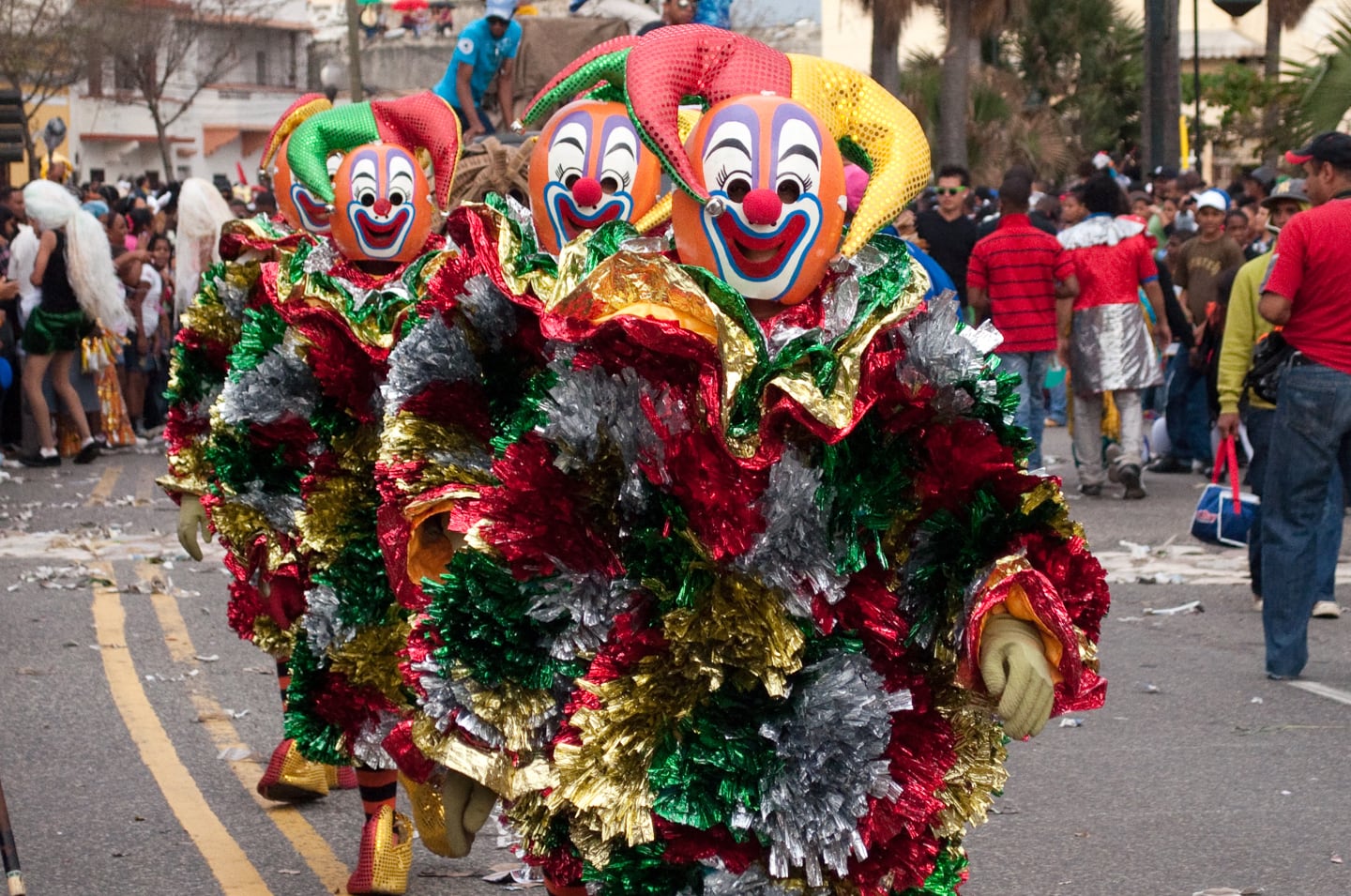
Each troupe represents a different region, town, neighborhood or organization. Each will display their own unique costumes and customs.
In the Dominican Republic, some troupes actually burn their costumes after Carnival as a method of seeking closure, while other troupes give their used costumes to the children.
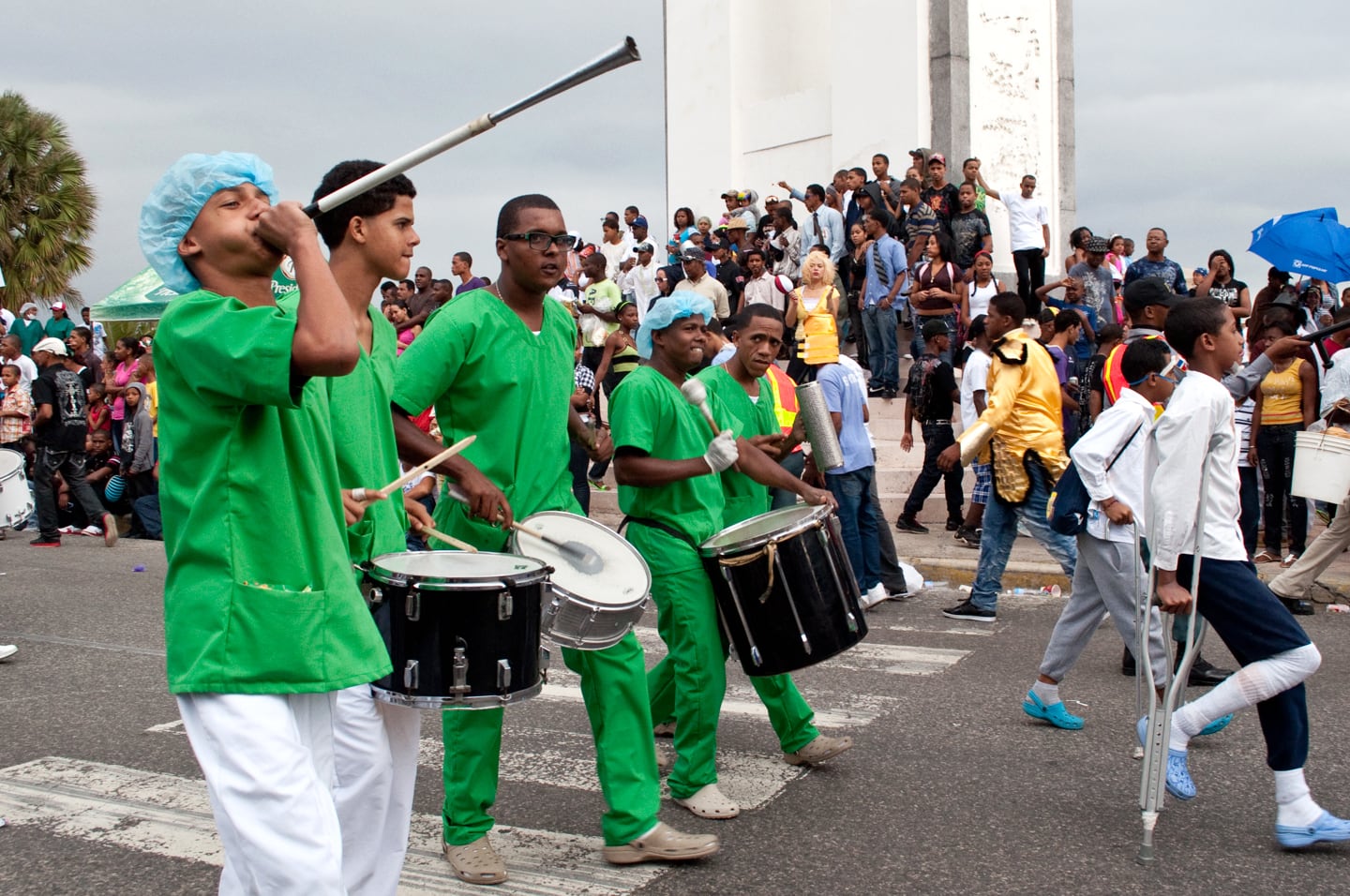
The Dominican standing next to us said that this was a group of hospital workers representing their hospital.
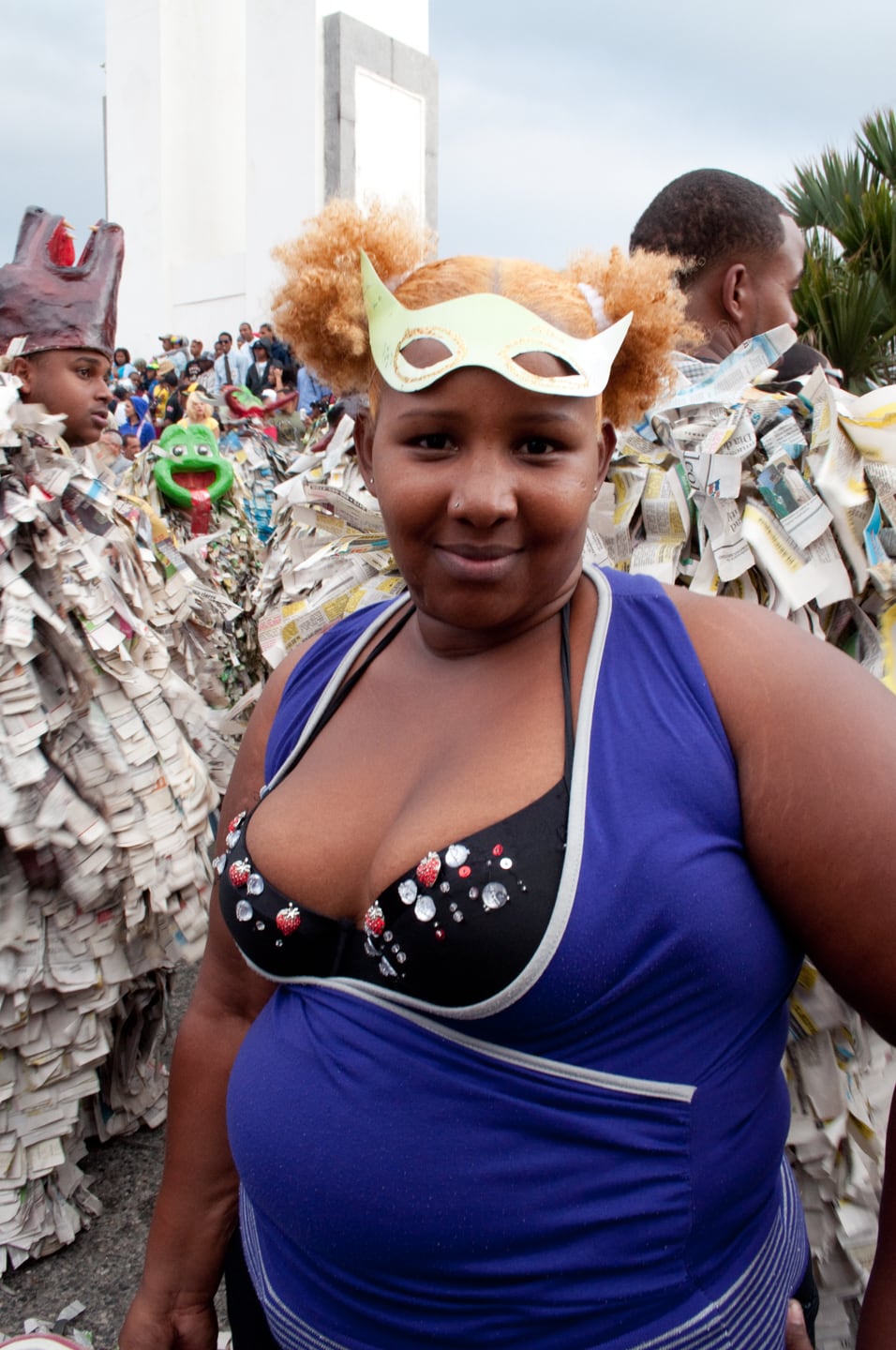
We were blown over by how welcoming and personable everyone was to us. I was initially a bit reluctant to snap pictures of individuals, but it seems everyone wants their picture taken. For instance, after noticing me photographing a troupe, the woman above turns to me and says insistently, “Take a picture of me! I am not that bad looking!”
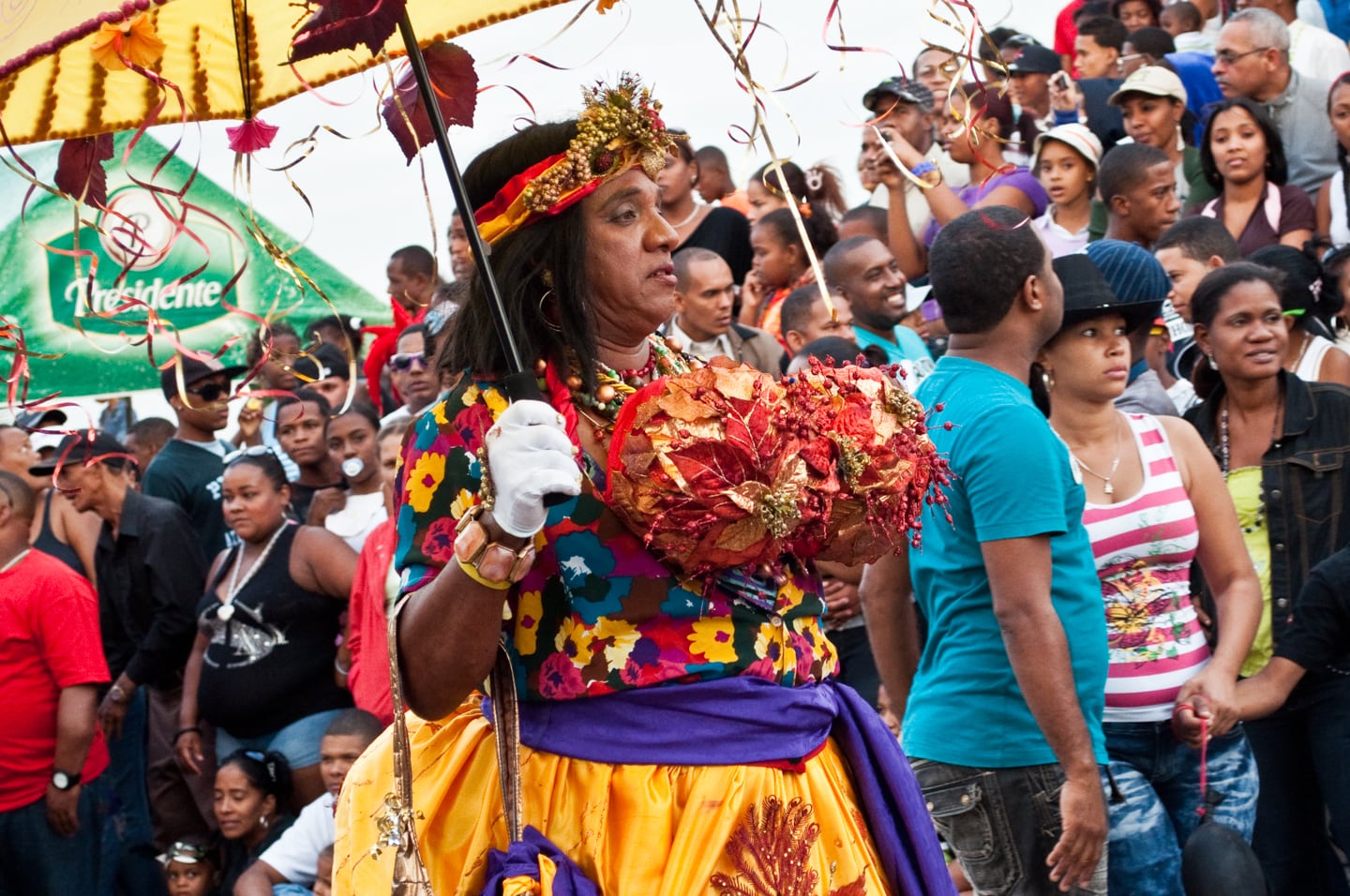
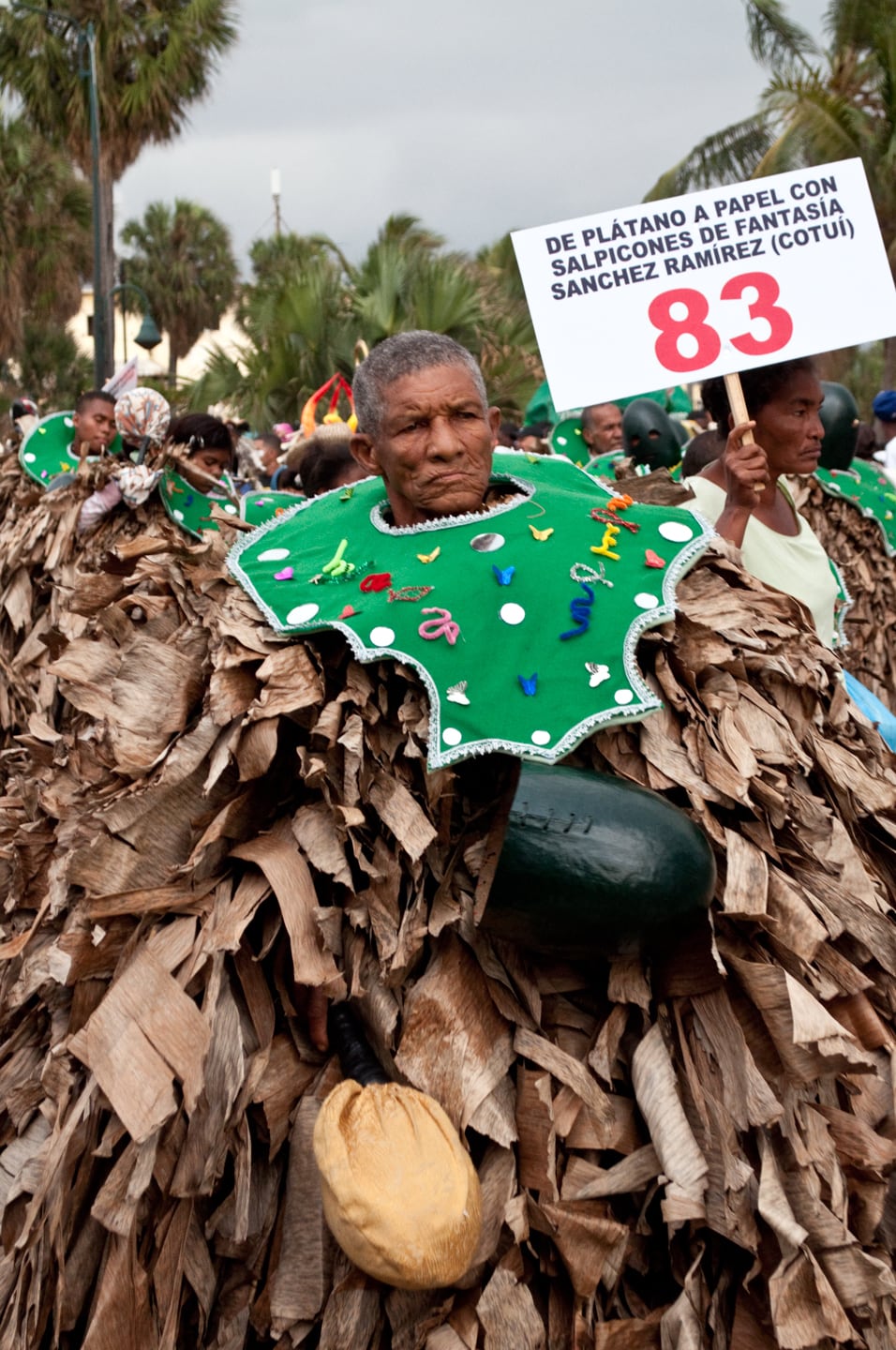
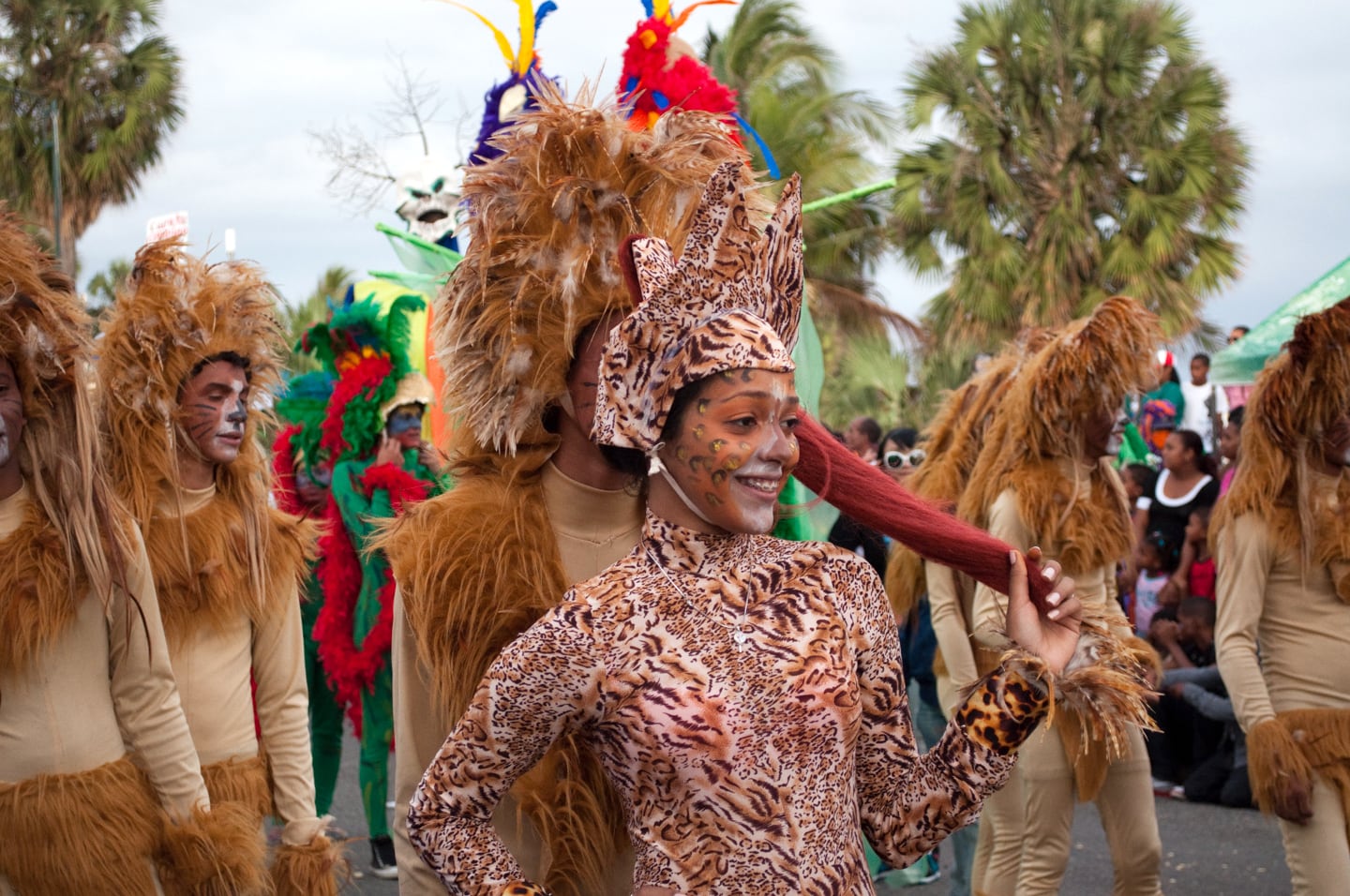
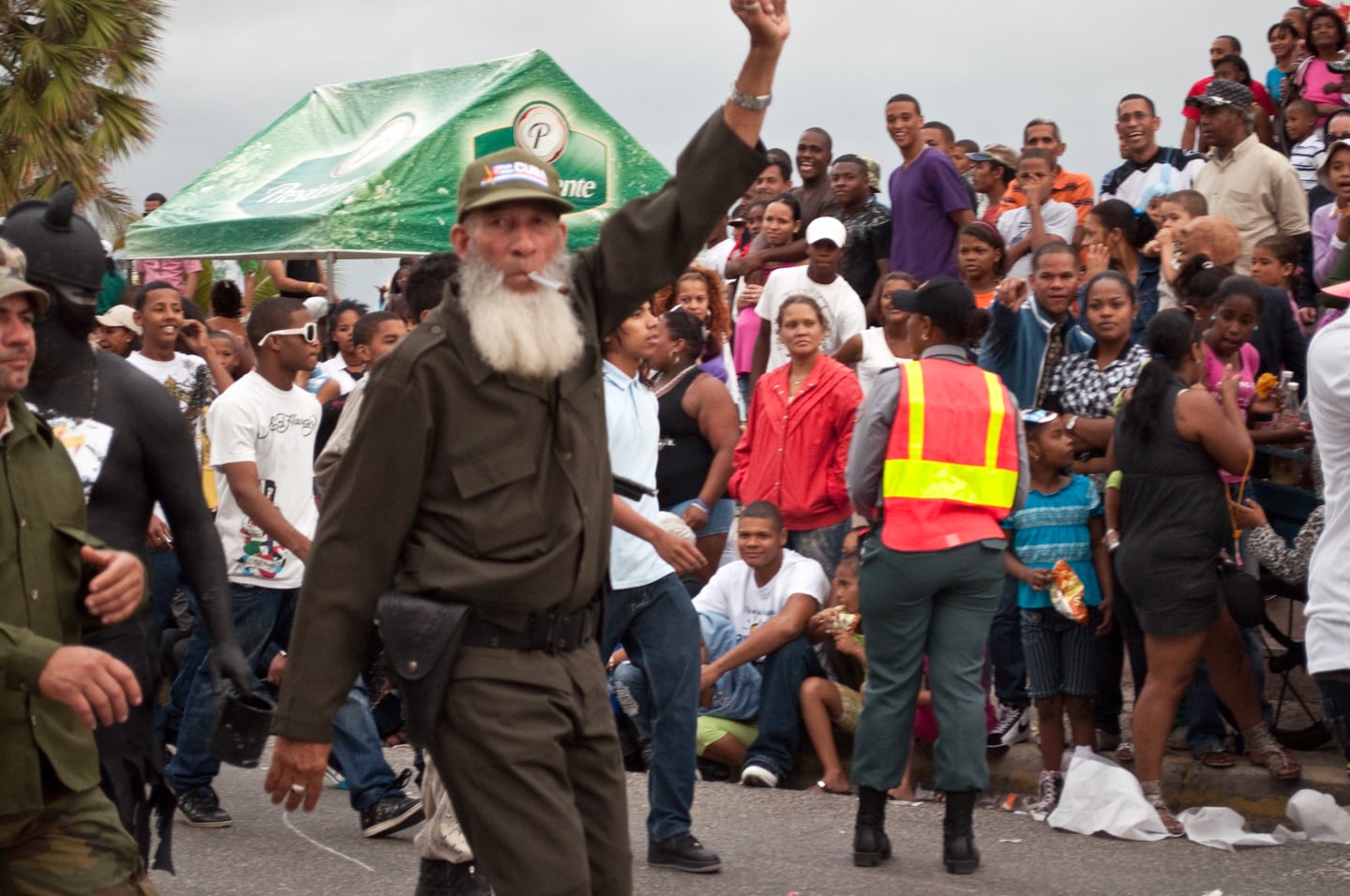
Fidel looks alive and well in Santo Domingo!
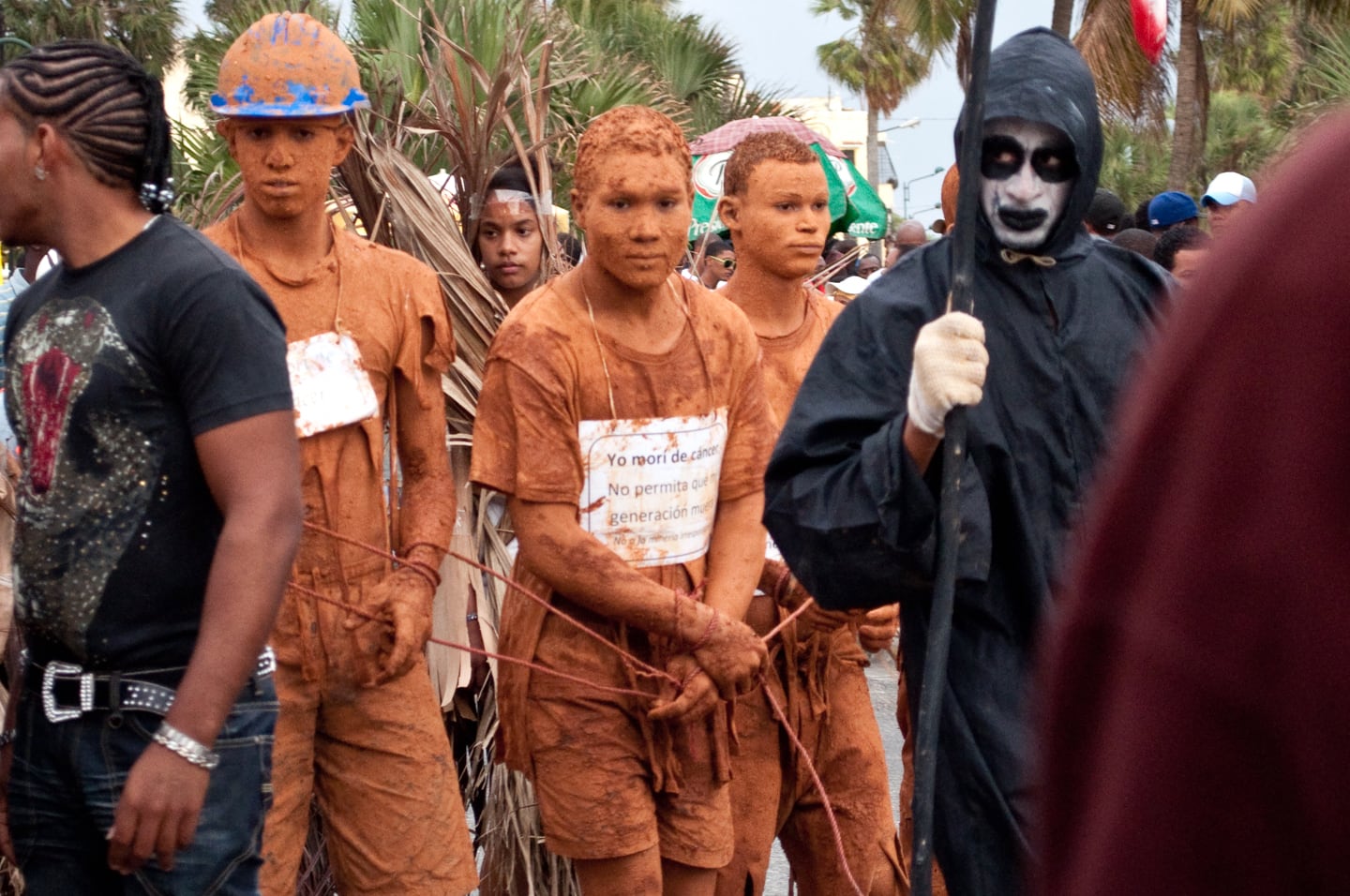
Not all costumes are humorous. Some costumes are political. I can’t remember what the sign on the front said, but I think it had to do with miners’ health and safety.
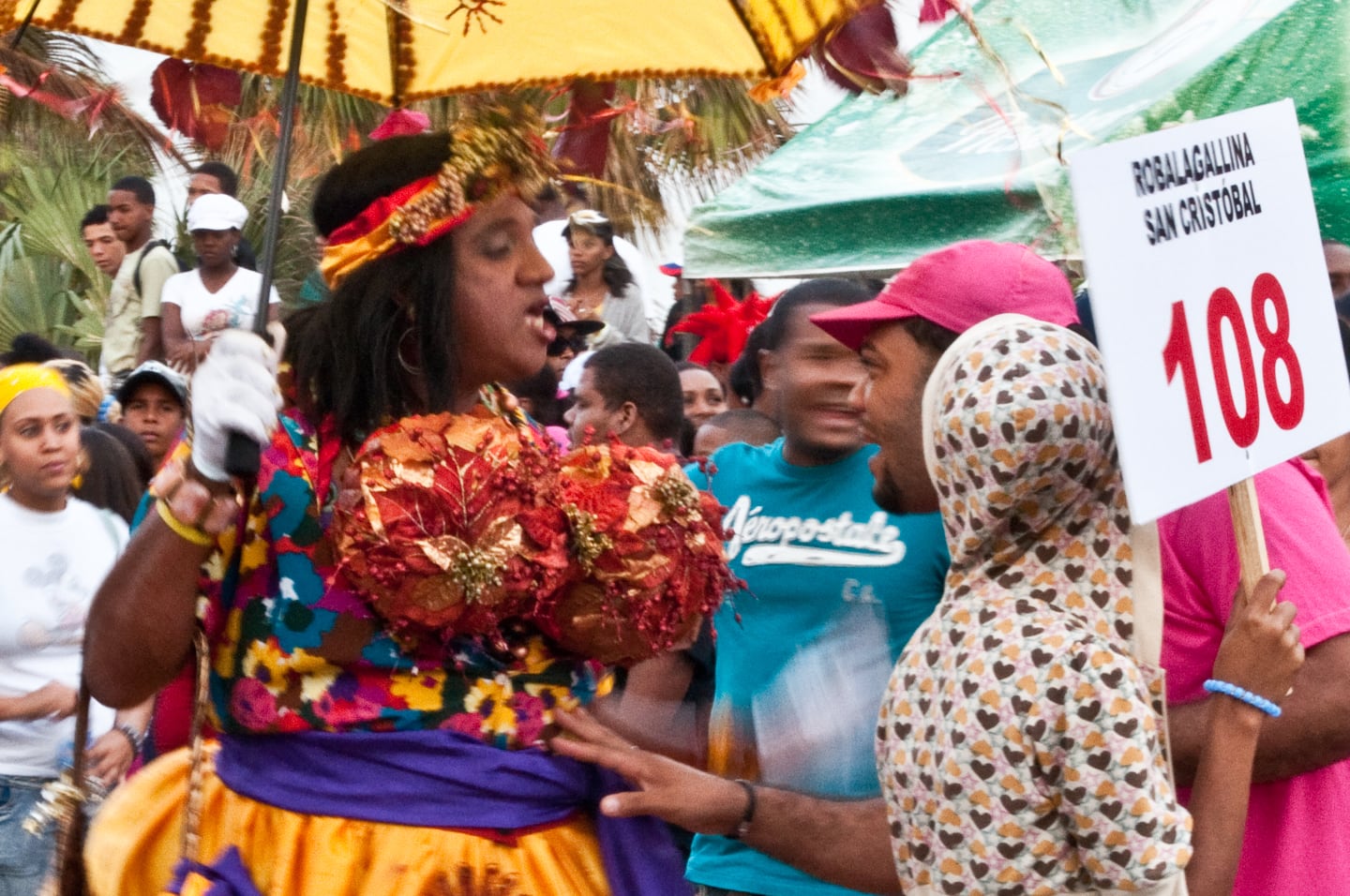
The number is what identifies the troupe to the judges.
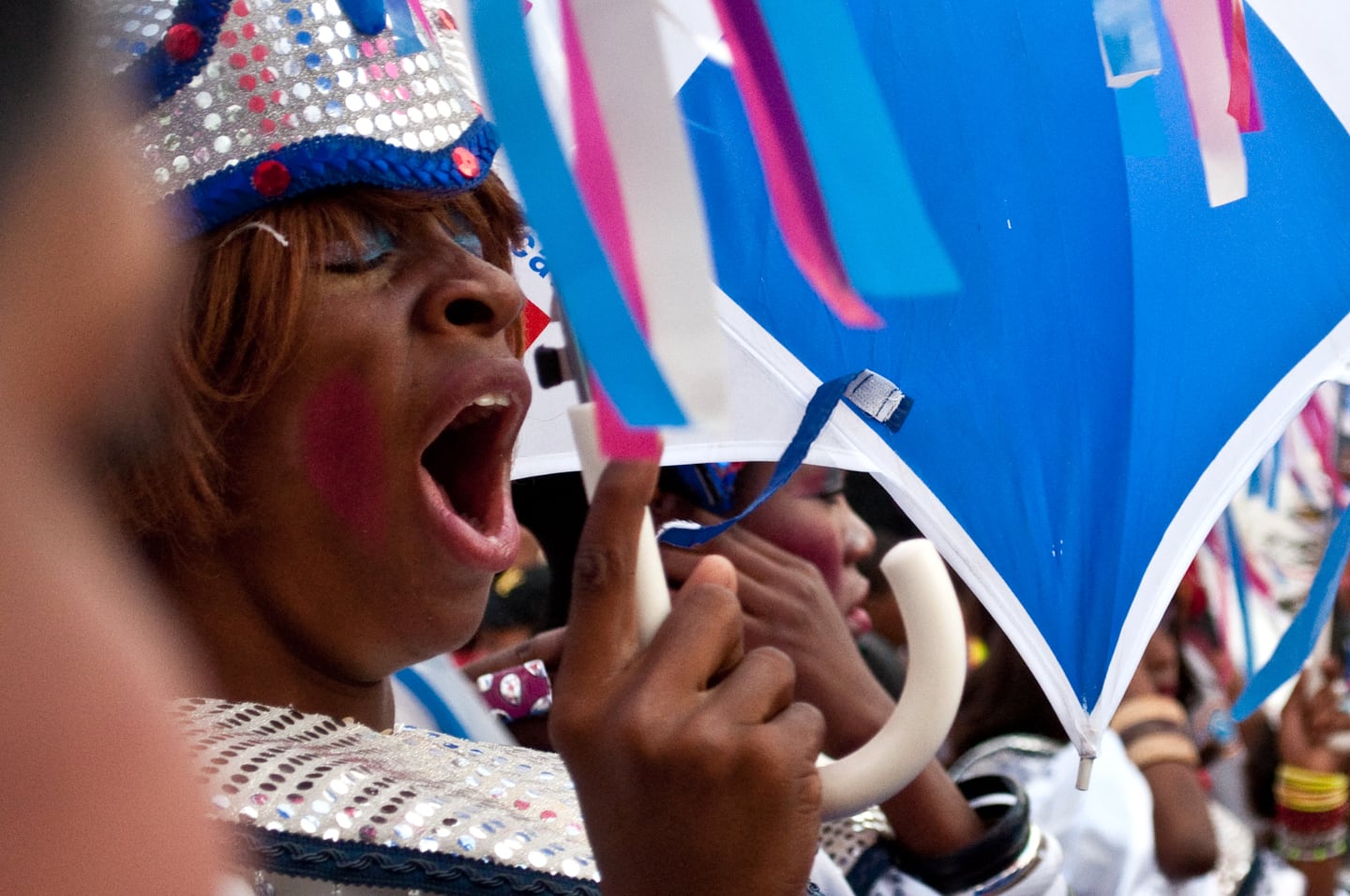
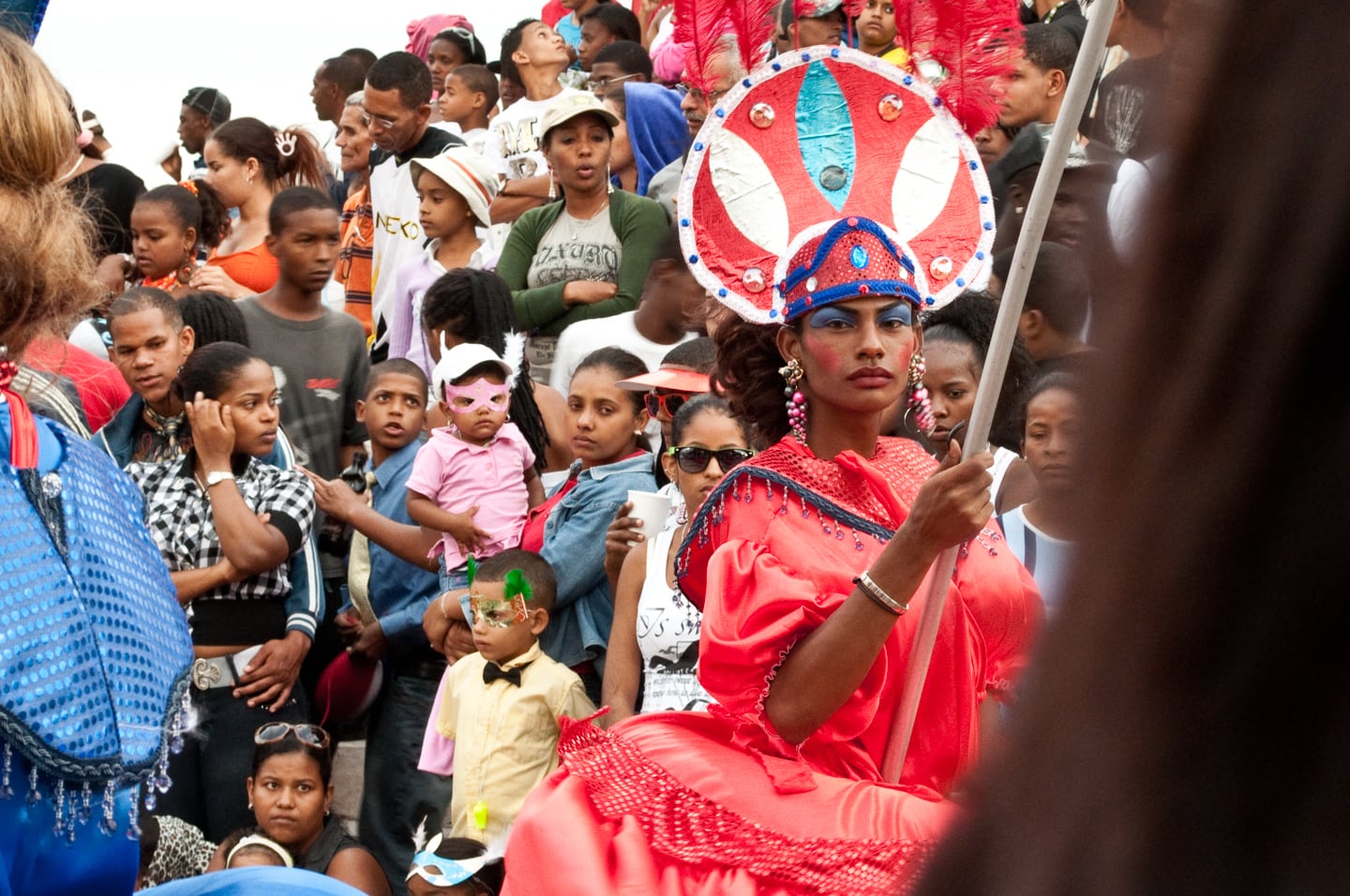
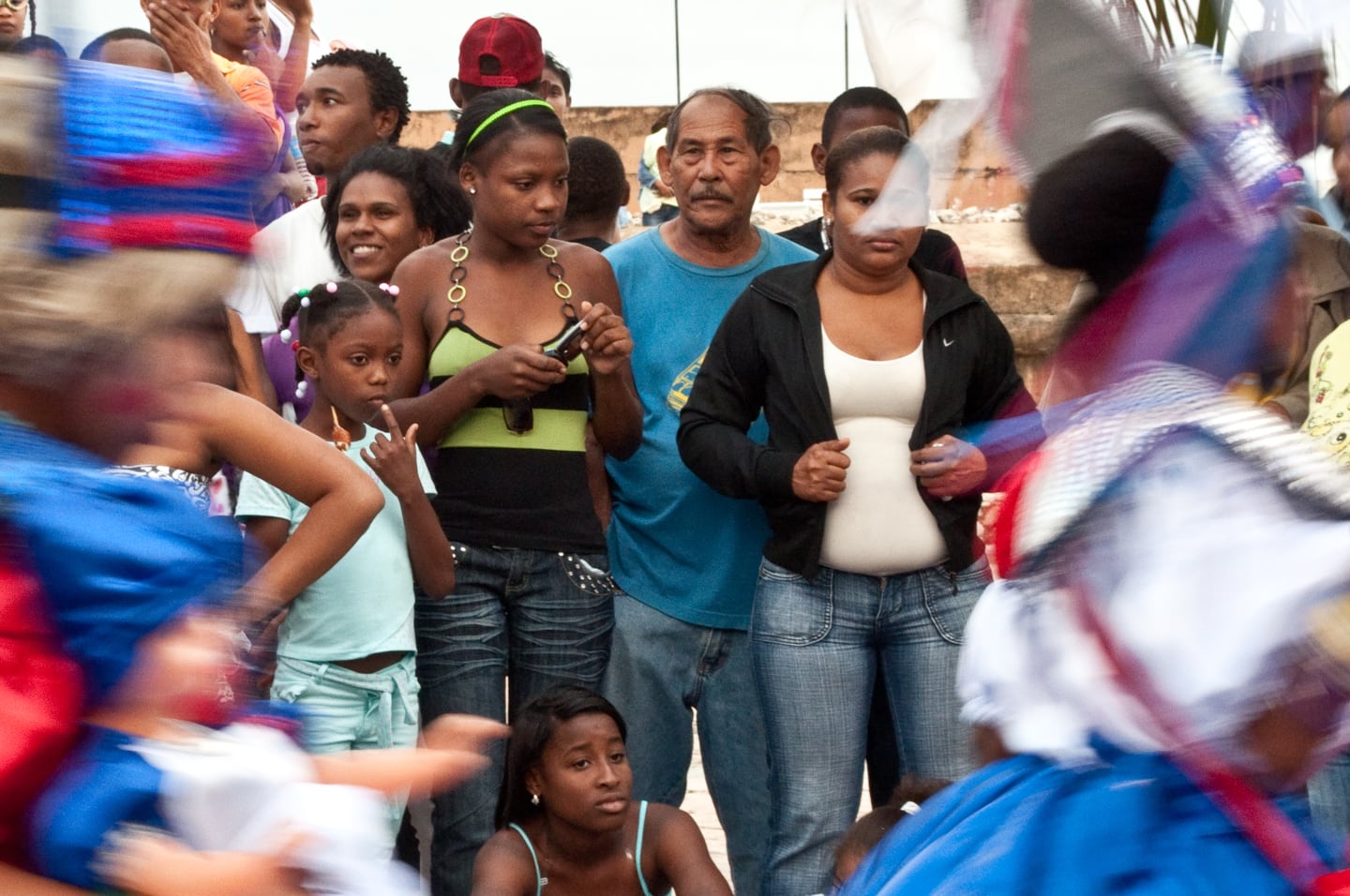
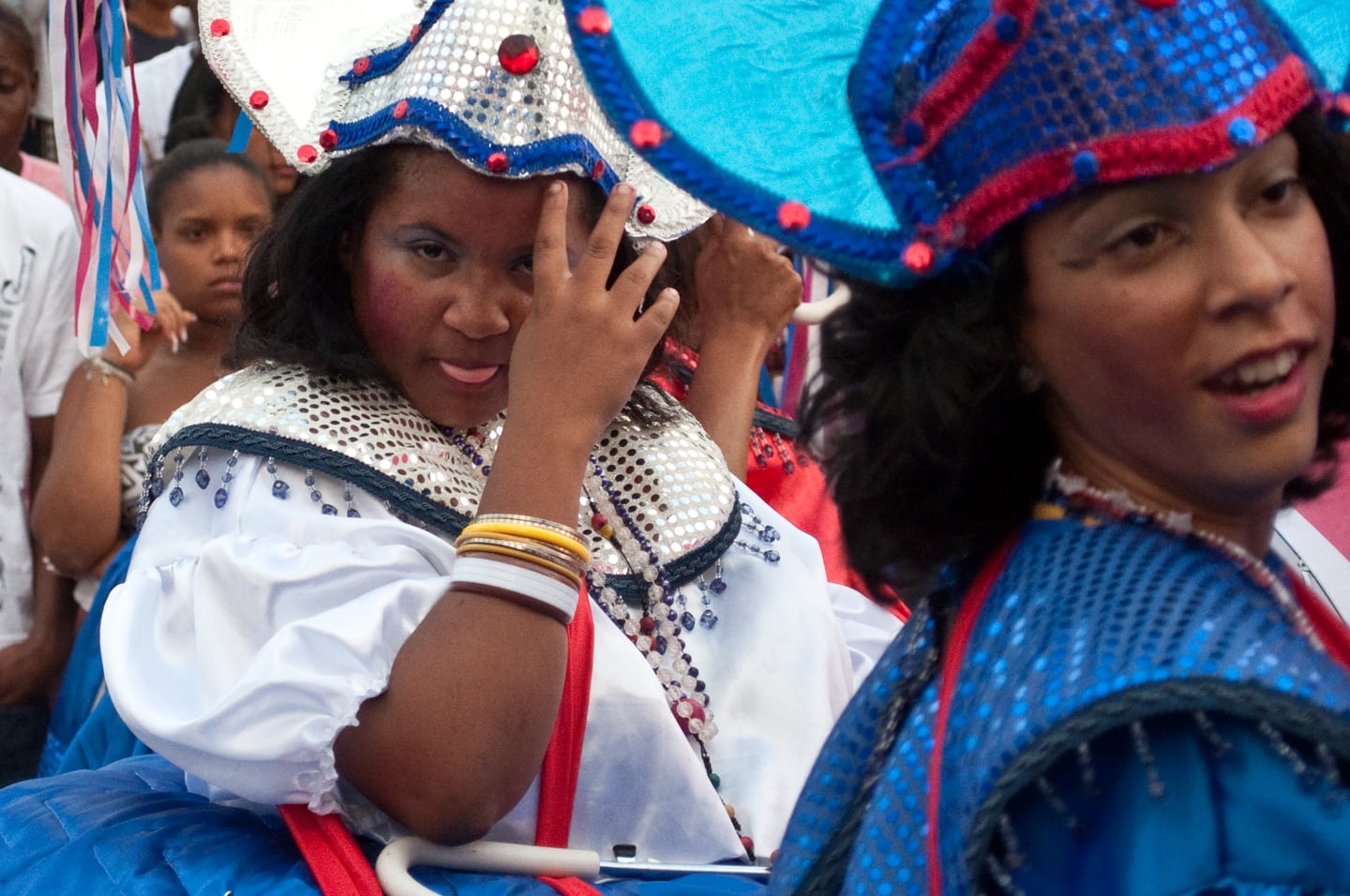
Another couple of gregarious folks posing for a portrait.
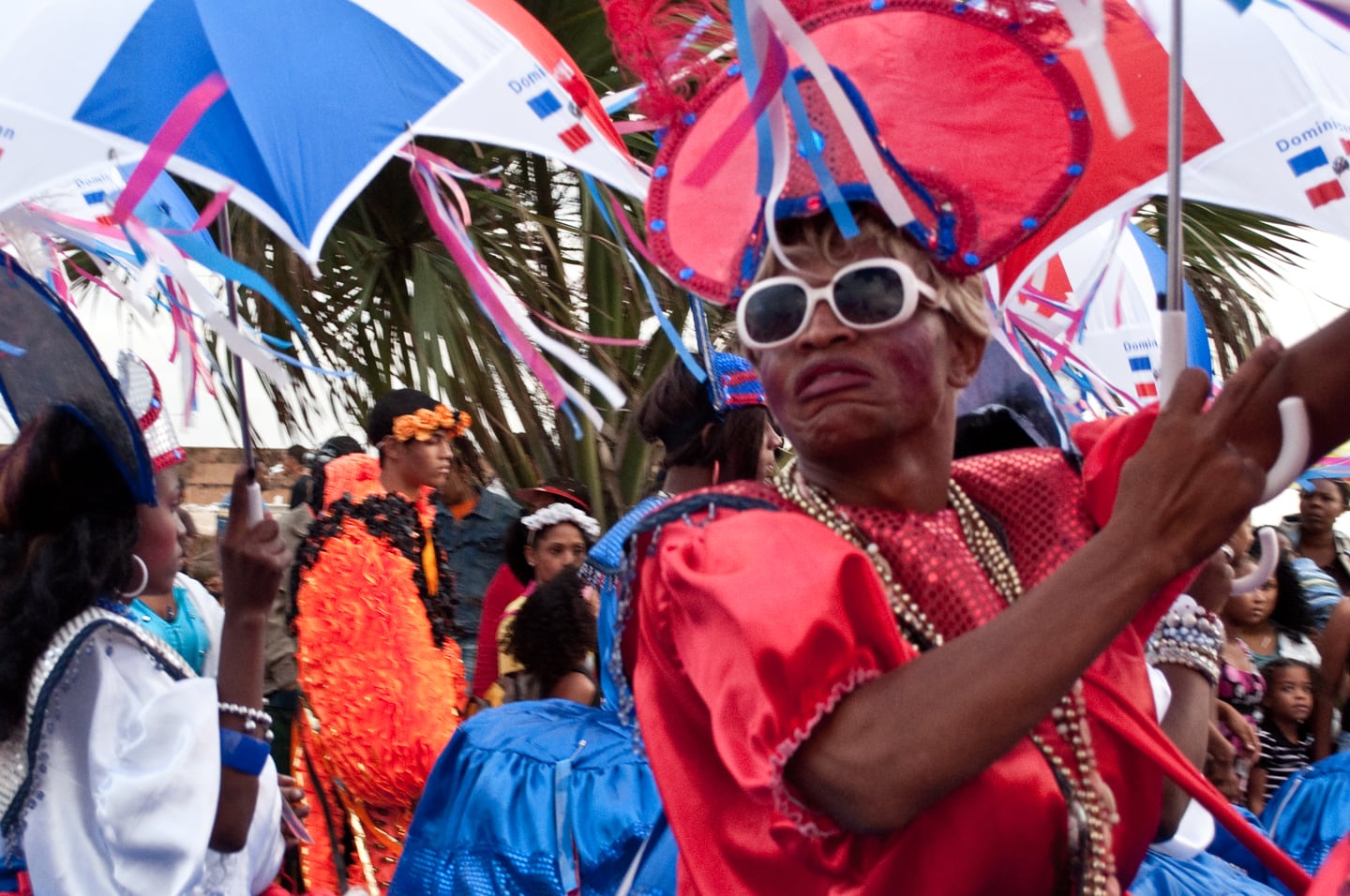
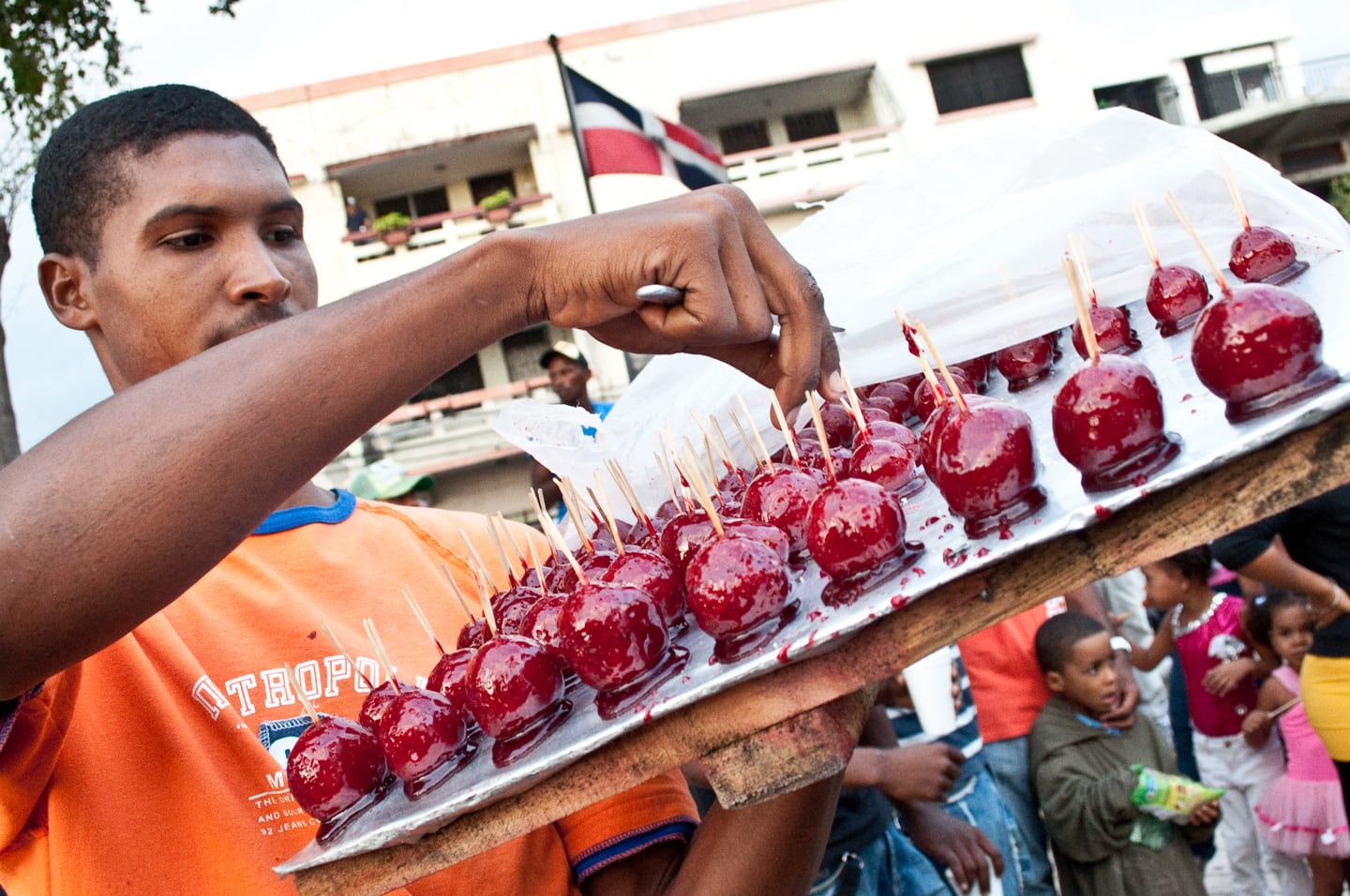
Carnival festivities are good for the economy too. People come from all across the Dominican Republic to partake in the event. Vendors sell everything from mementos to regional treats. These coconut candy balls, in particular, caught Lori’s eye. Of course we had to try a few. Delicious.
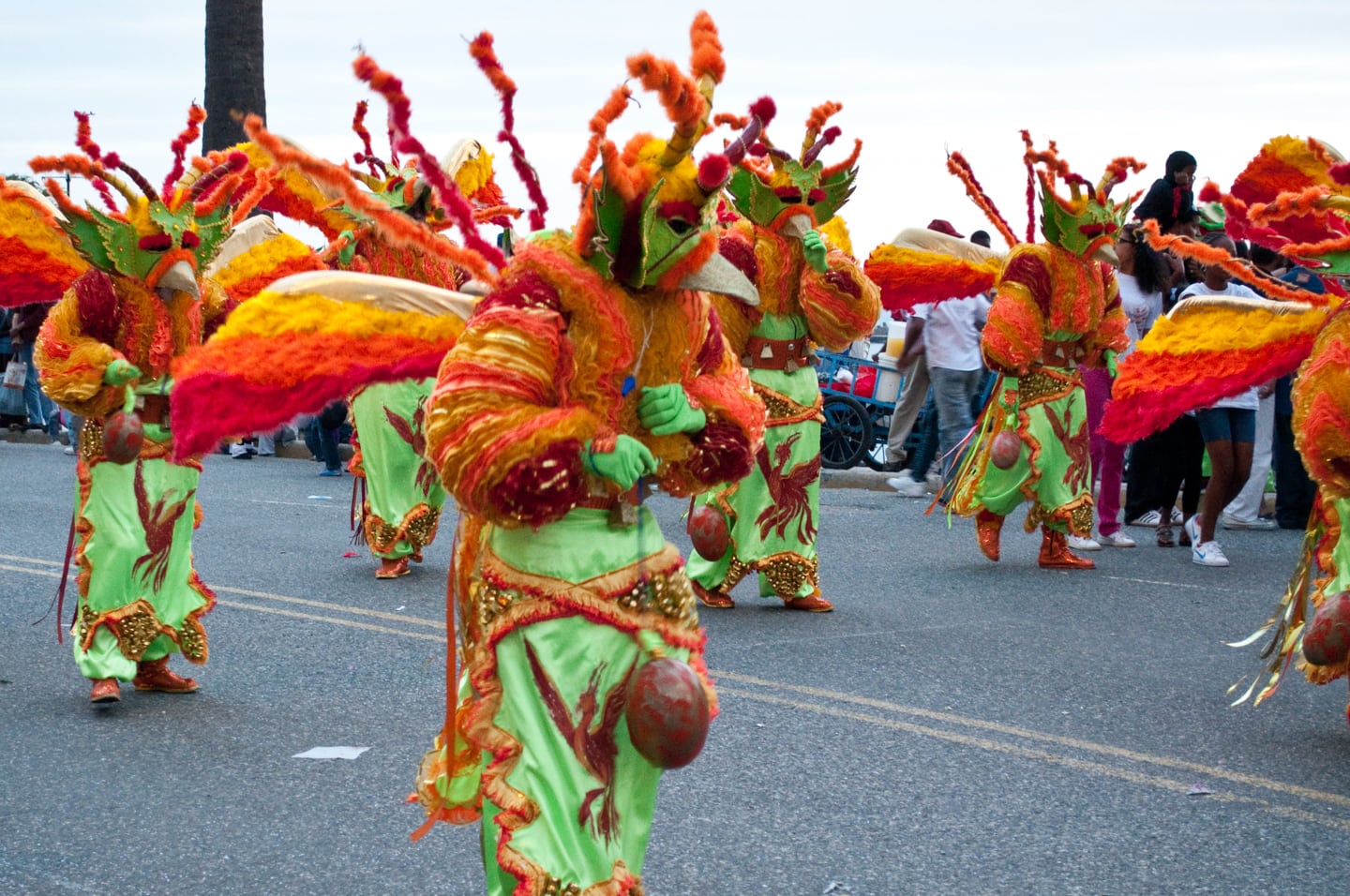
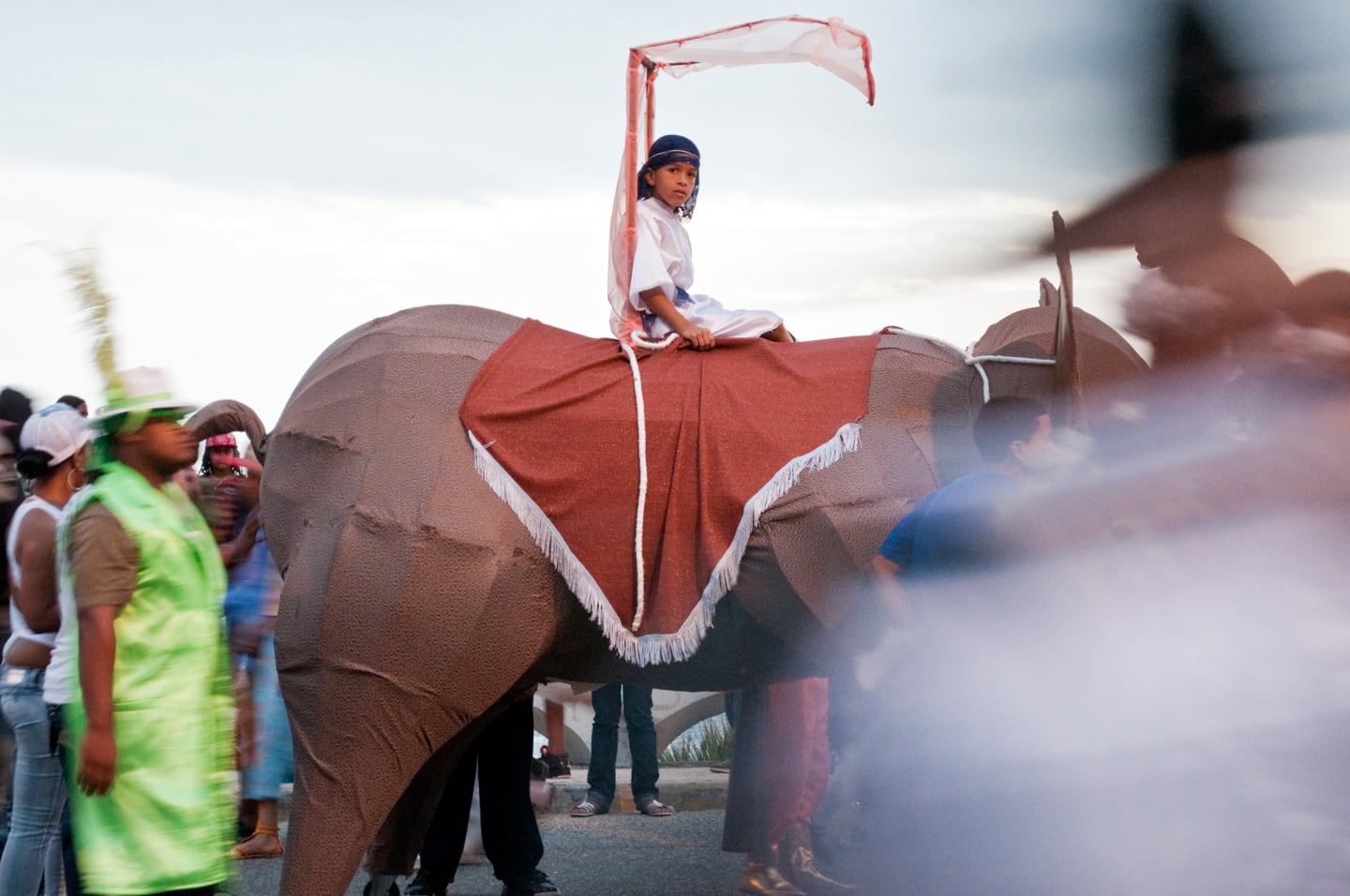
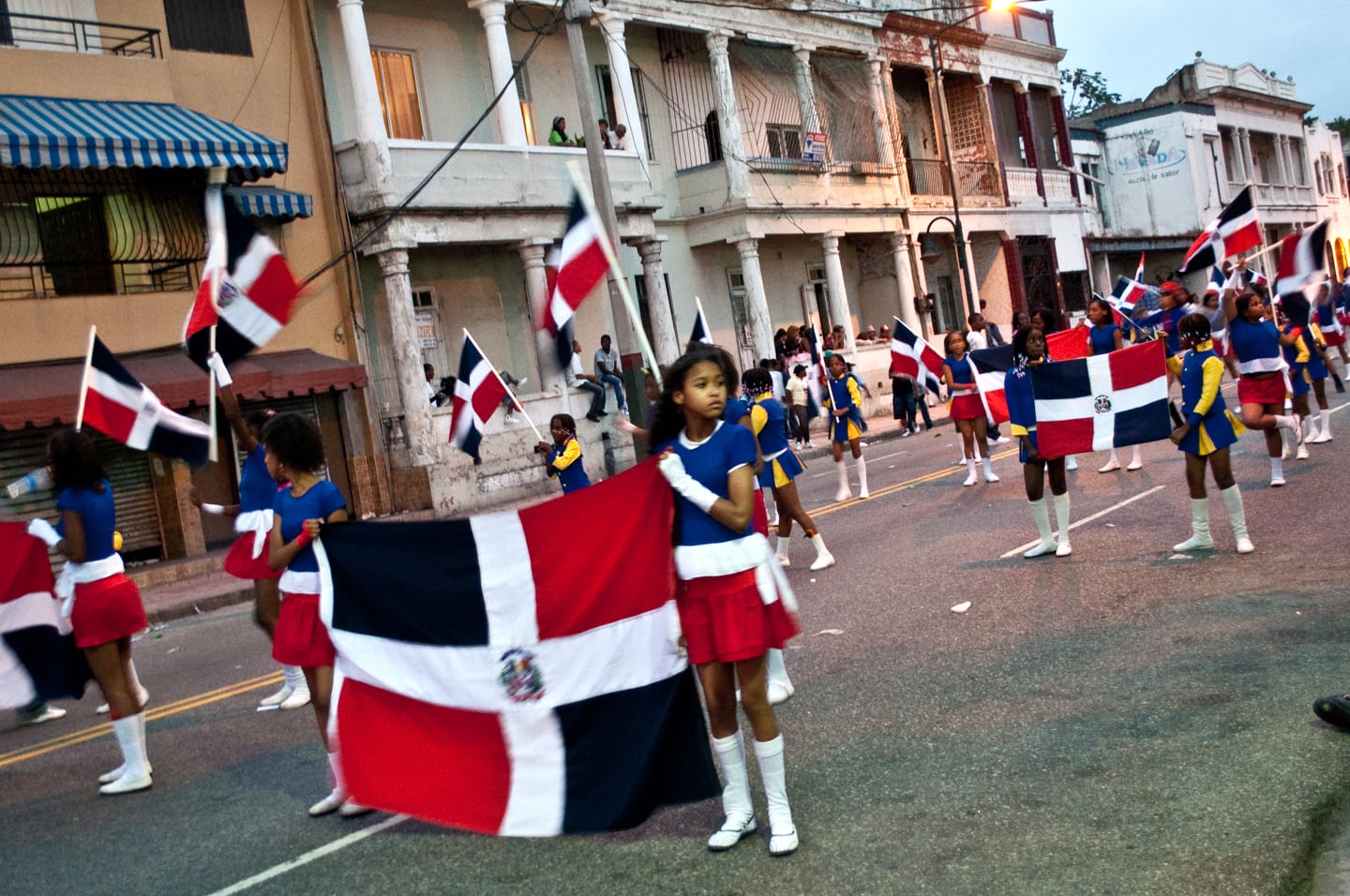
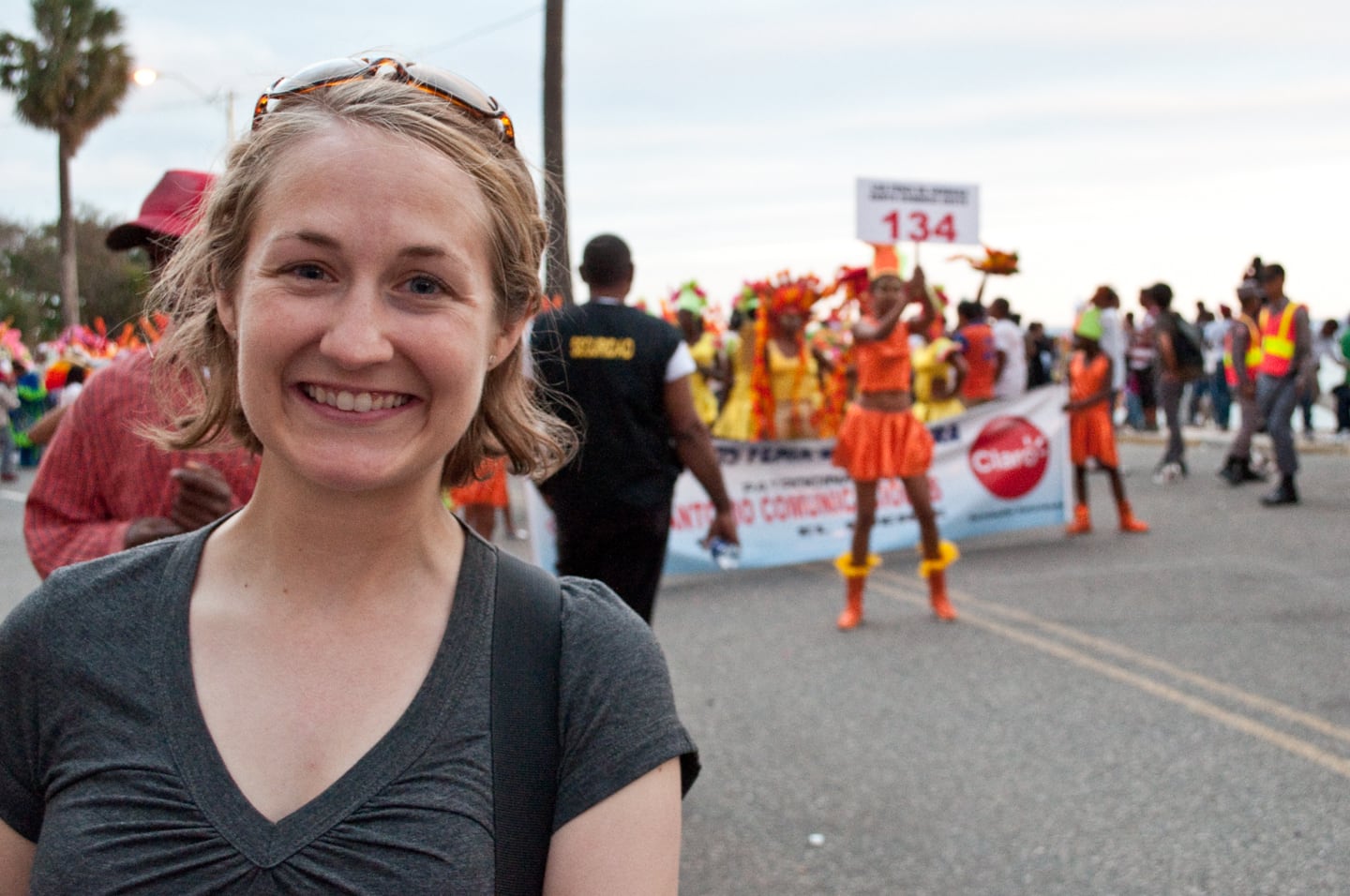
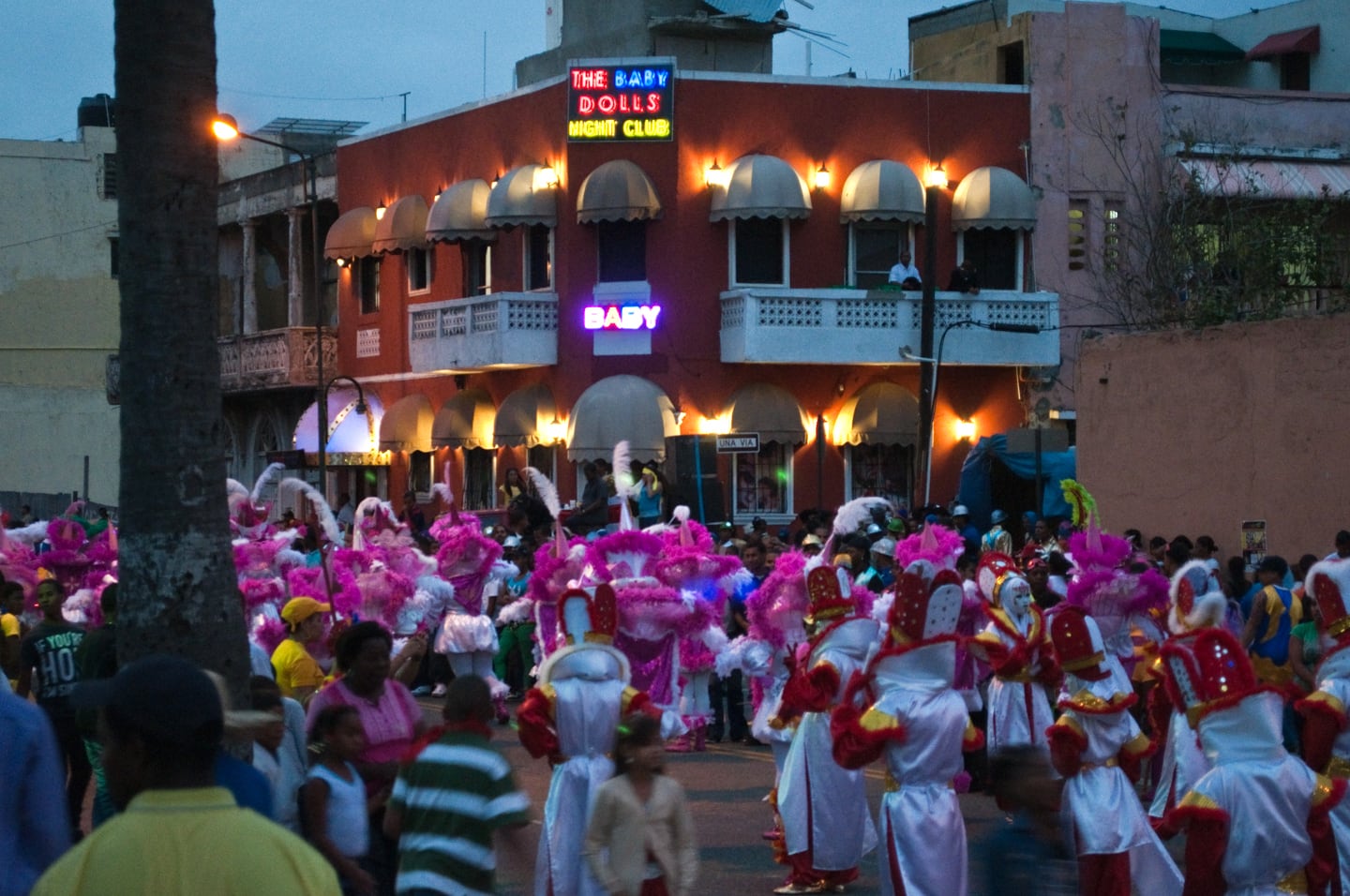
We stayed and watched the parade for several hours until the sun began to set and the crowds started to thin.
Afterwards, we ate at a cool little place overlooking the Caribbean called D’Luis Parrillada. It reminded me of a couple of restaurants in Maputo on Av. Marginal overlooking the Indian Ocean.
While we waited for our food, it had turned a bit breezy, and after an eventful, people-packed day, we had the whole restaurant to ourselves.
And that’s the end of the Dominican Republic’s amazing Carnival…until next year, of course.
More Caribbean Inspiration
- Santo Domingo’s Historic Zona Colonial — Oldest European settlement in the Western Hemisphere
- Backpacking Jarabacoa, Dominican Republic — City of Everlasting Spring
- Playa Blanca & Siete Altares in Guatemala — Detailed backpacker’s guide
- Tobacco Caye, Belize — The Ultimate local’s guide
- Livingston, Guatemala — Detailed backpacker’s guide
- Lime Caye, Belize — The ultimate off-grid island escape
- Cockscomb Basin Wildlife Sanctuary & Jaguar Preserve
Thanks for the pictures etc…. They are wonderful, I learned a lot and know you two had lots of fun. Ann